CHAPEL FM
The Radio Station at the Heart of Town
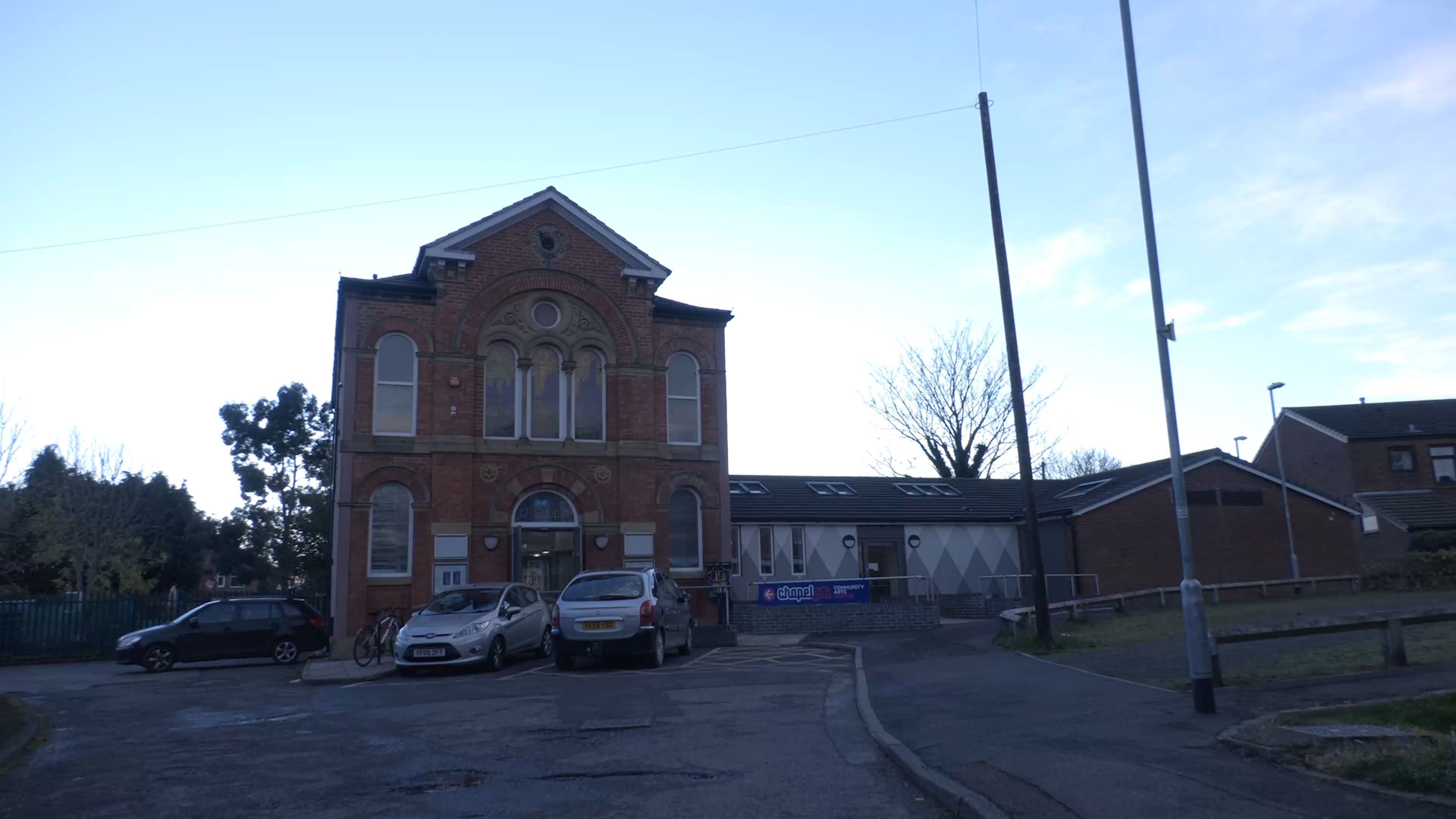
At the heart of Seacroft, 4 miles East of Leeds, sits Chapel FM, the area's first and only dedicated arts centre. In a country where funding to youth services have been cut by up to 70% over the past decade, the work that goes on behind these chapel doors proves invaluable to the surrounding community.
An early autumnal breeze danced and swirled as a crowd gathered in front of Seacroft Methodist Church. As the scissors clenched around the ribbon that hung in front of the new entrance, Chapel FM was about to unveil its newly refurbished home. A new chapter was about to begin.
With a wall knocked through from the chapel building to the hall next door, the building had effectively doubled in size with an open café space joining the two.
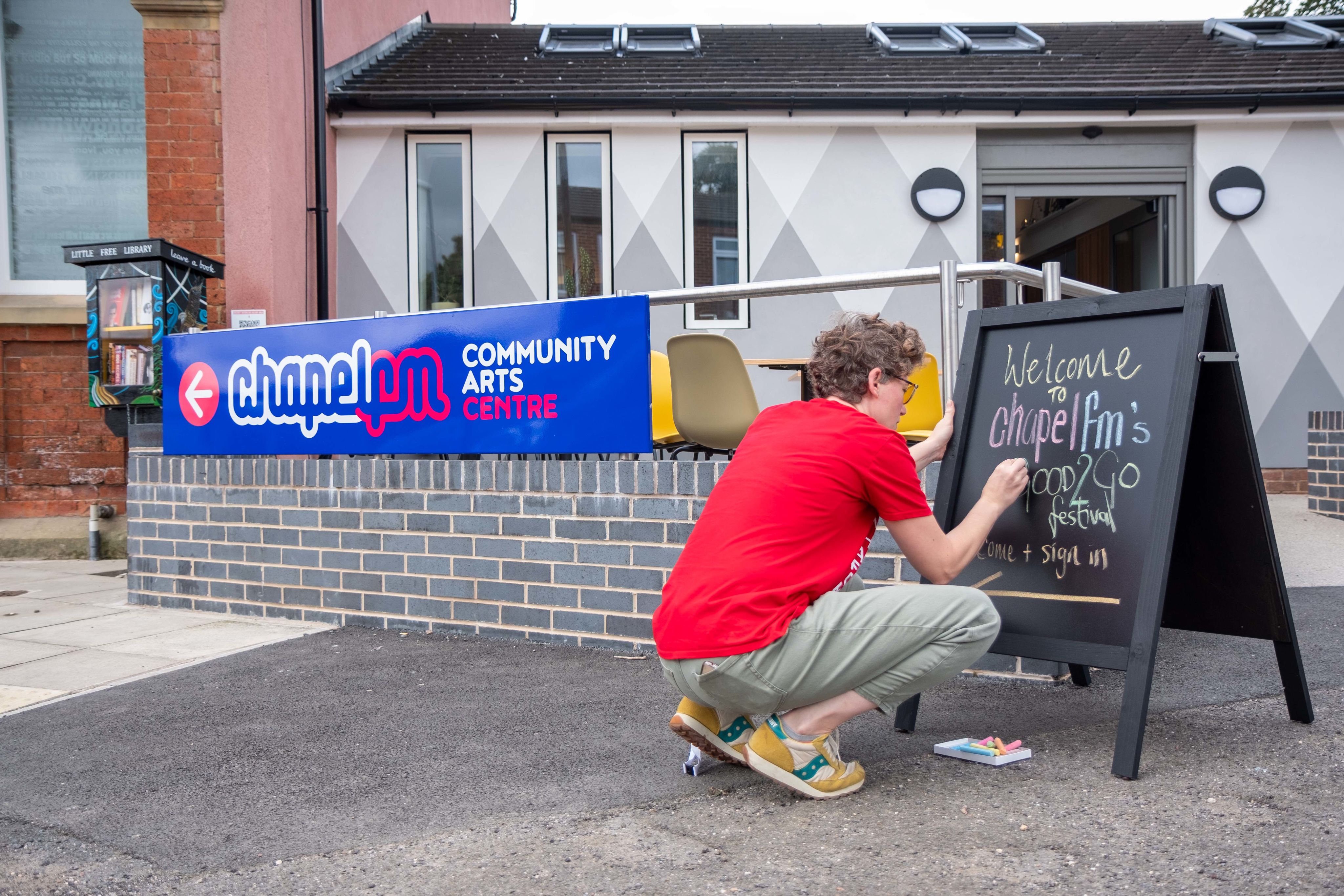
Katy Hayley, Chapel FM's participation manager, writes a welcome message for the Good to Go Celebration
Katy Hayley, Chapel FM's participation manager, writes a welcome message for the Good to Go Celebration
The day provided great excitement for all. Puppet making workshops took place before a Peter Mitchell photo exhibition opening.
The chance to learn how to create your very own radio show was given to those who ventured into one of the radio studios. Photographer Lizzie Coombes worked with Chapel FM's Director of Words, Peter Spafford, to create poem portraits of those who attended.
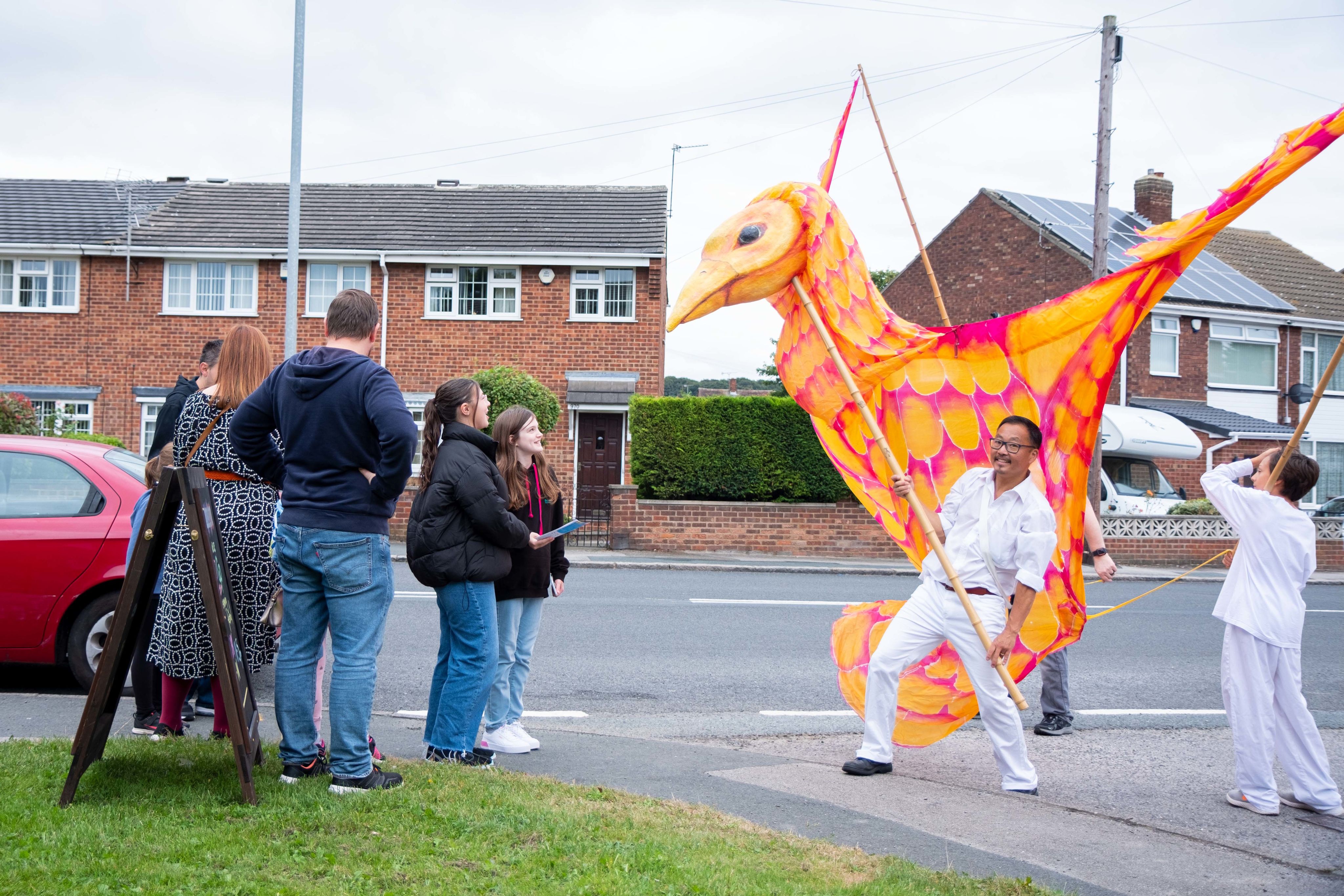
One of the three large puppets that toured Seacroft that afternoon
One of the three large puppets that toured Seacroft that afternoon
Large, brightly coloured phoenix puppets danced around the village green, putting smiles on the faces of those sitting in nearby pubs and homes.
A festival-like feel descended upon Seacroft that day with great celebrations taking place throughout.
"We were going to do the reopening in March, when we invited the young people back into the building," Katy Hayley, the group's participation manager said, "but it just didn't feel quite ready at that point.
"We needed to stop and recognise our achievements of getting to this point."
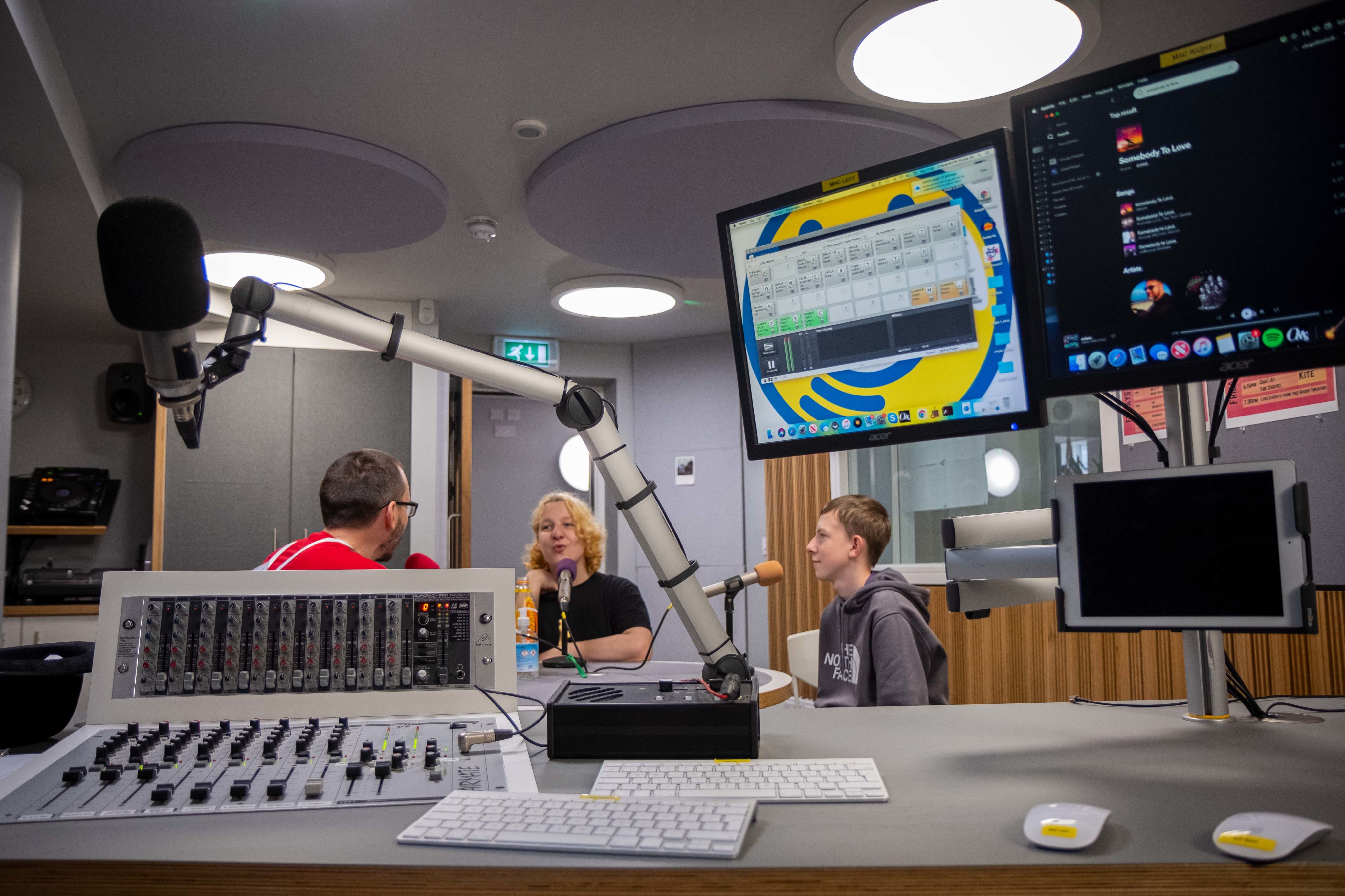
Henry with two young broadcasters in studio 2
Henry with two young broadcasters in studio 2
Whist their journey had started many years ago, reopening the chapel in September was a huge achievement on its own, especially during a pandemic. Reopening their doors to those around them was a huge milestone for not only them, but also for the community they're part of.
"It went well, we had a great turnout," Katy noted, "it was a fabulous three-week festival."
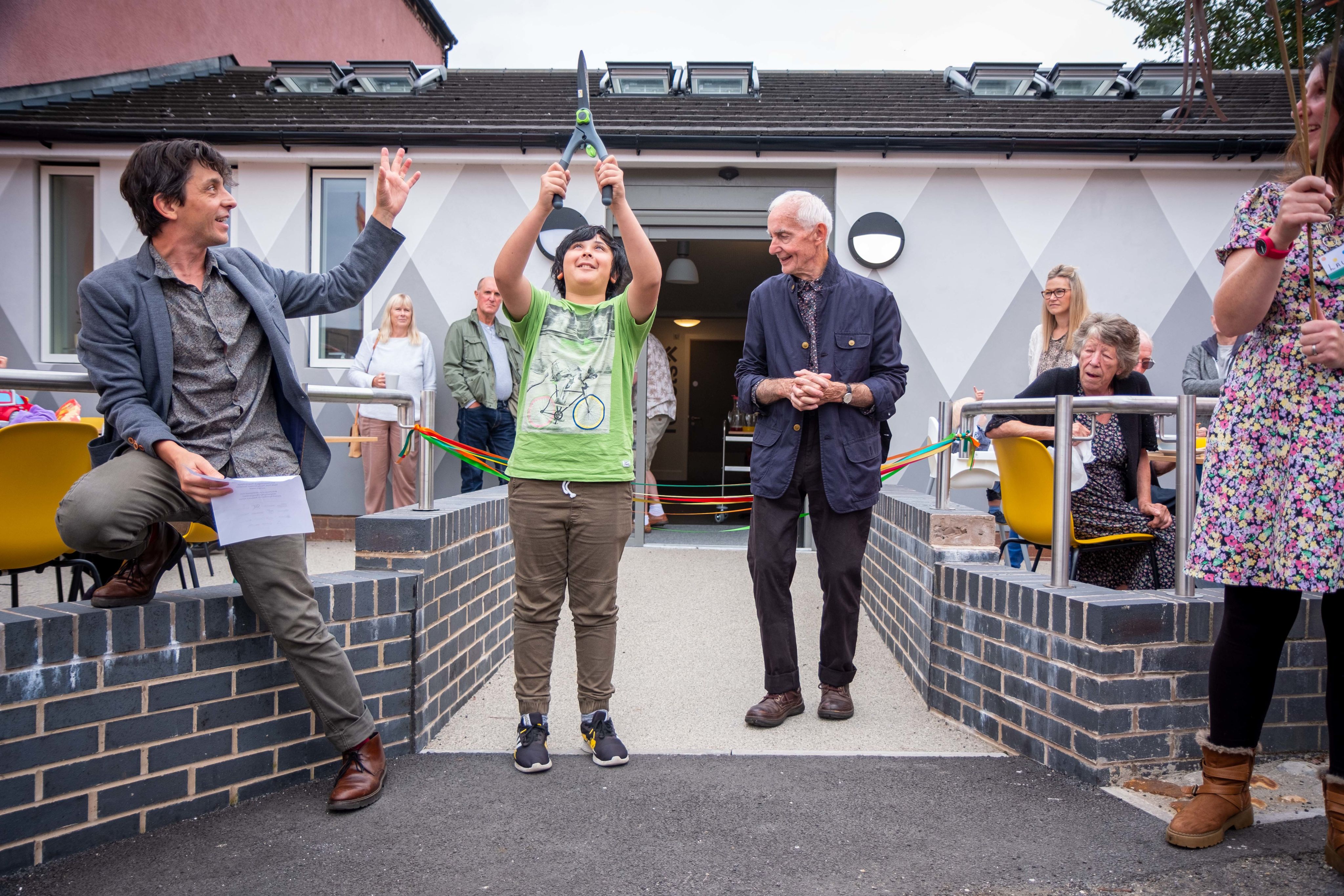
Tony Macaluso, Johan and Peter Mitchell at the reopening ceremony
Tony Macaluso, Johan and Peter Mitchell at the reopening ceremony
With the Good to Go celebrations behind them, Covid restrictions lessened and people eager to return, the real work was just beginning.
In just over four months, Chapel FM would, as annually is the tradition, commit to a Musicathon. A 24-hour non-stop live performance with over 40 different acts taking part.
And regular life would resume. In the months that followed Good to Go, the building was in full use. One hour saw a jazz collective rehearsing, the next, an open mic with all invited.
The hive of activity, whilst subdued somewhat through the pandemic, was very much alive again.
But at the very core of everything Chapel FM does is providing a platform for young voices to be heard, something that never really ceased throughout the previous couple of years.
The Next Generation
Like two groups of opposing Fleet Street journalists, the Young Broadcasters sat huddled around separate tables drafting questions to ask their new music worker Martin Berger, and local musician Molly Rymer.
Being watched under the careful eye of Director of Words, Peter Spafford, the group worked quickly, throwing around ideas for what to cover in their interviews.
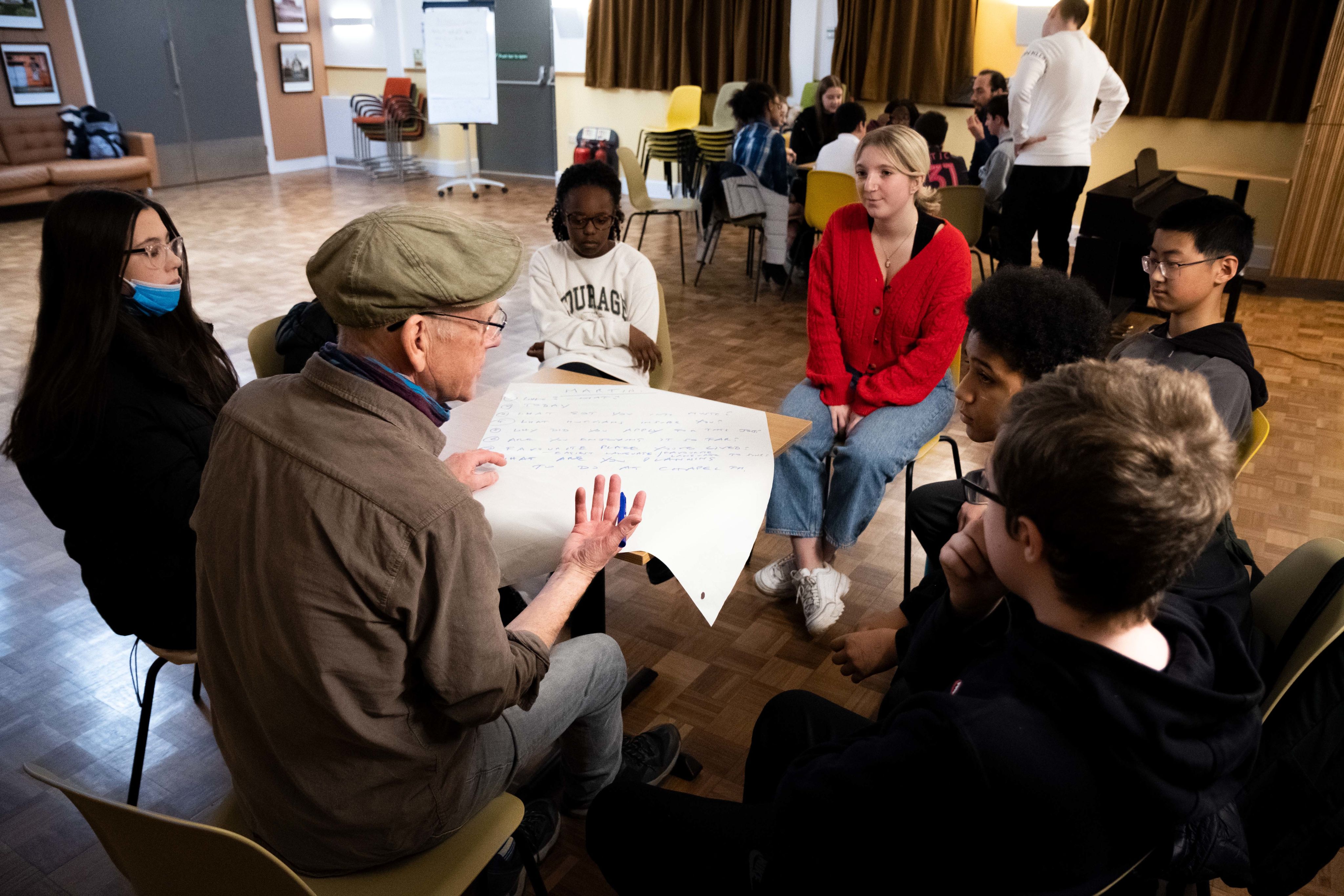
Peter Spafford and the Young Broadcasters drafting questions.
Peter Spafford and the Young Broadcasters drafting questions.
"Why don't we ask Martin about his home town in Argentina?" One proposed.
"Or what about how he got into music?" Another responded. Each idea was excitedly jotted down on a large piece of paper, later to be refined and adapted before recording in the radio studio.
The diversity in the room was striking. Kids from all different ages and backgrounds sat next to one another. No question about each other's roles, just simply working together to create the best possible interview to air the following day.
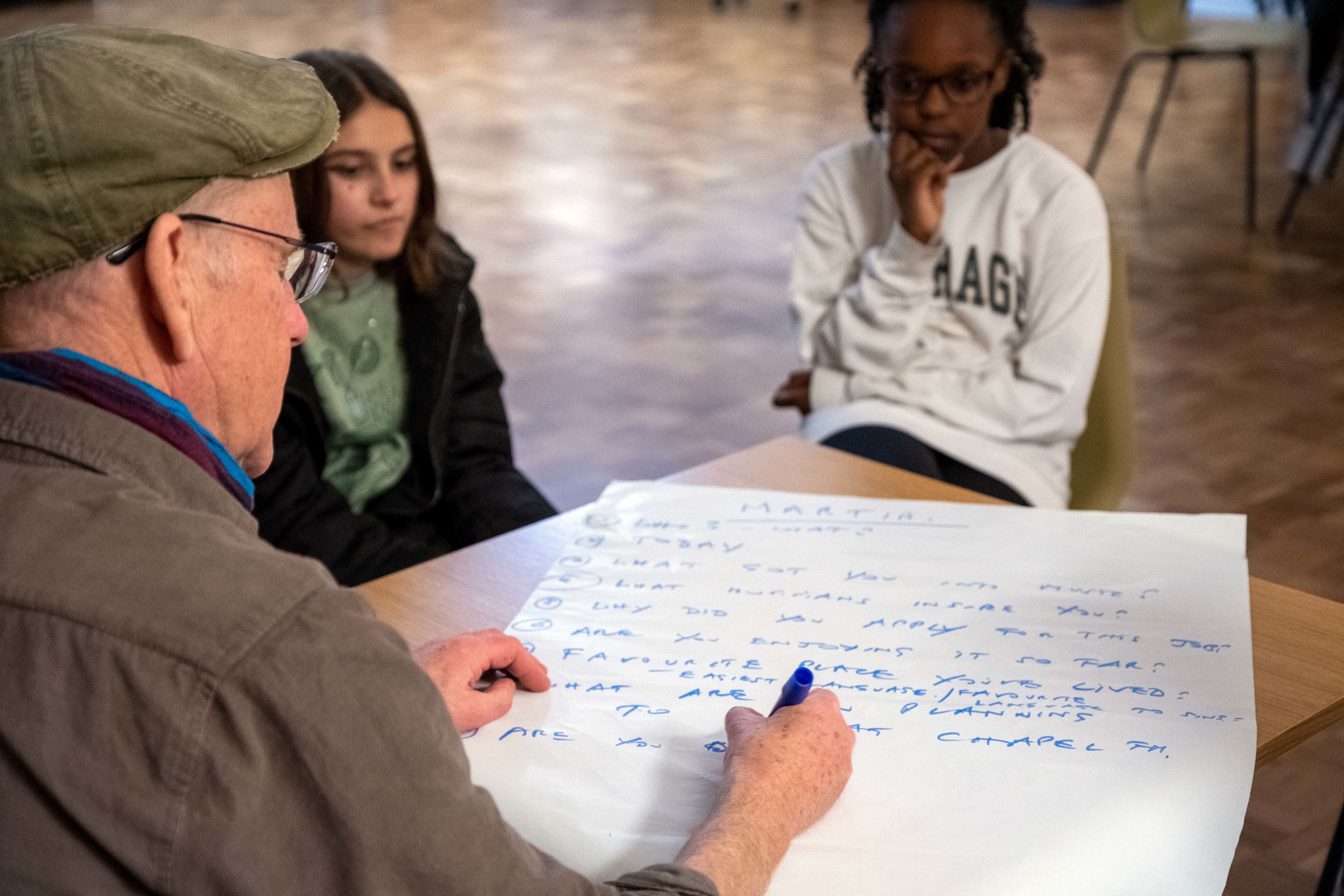
Peter Spafford, the group's Director of Words
Peter Spafford, the group's Director of Words
Once either group was happy with their questions, they headed for a radio booth, equipped with nothing more than their piece of paper and a pen. With that, they pressed record and began interviewing.
Martin sat back smiling as he answered the questions posed. The Young Broadcasters nodding to one another to signify who asked the next in their own silent language.
Questions focussed heavily on two categories close to Martin's heart: music and travel.
"When I was 16, a friend of the family visited and was playing [his saxophone]," the new music worker responded to a question of how he got into music in the first place, "and I heard him playing this saxophone and that just blew me away. I was like 'I want that'."
"You hop on the bus and the engine can be music... The birds in the morning [are] music and I love to discover that every day and to send that message across to everyone I speak with."
For some in the room that day, this was a session they'd been attending for many years. For others, like Martin, this was one of their first. But regardless of their experience, each person was given a chance to speak. To voice their opinion and share their thoughts.
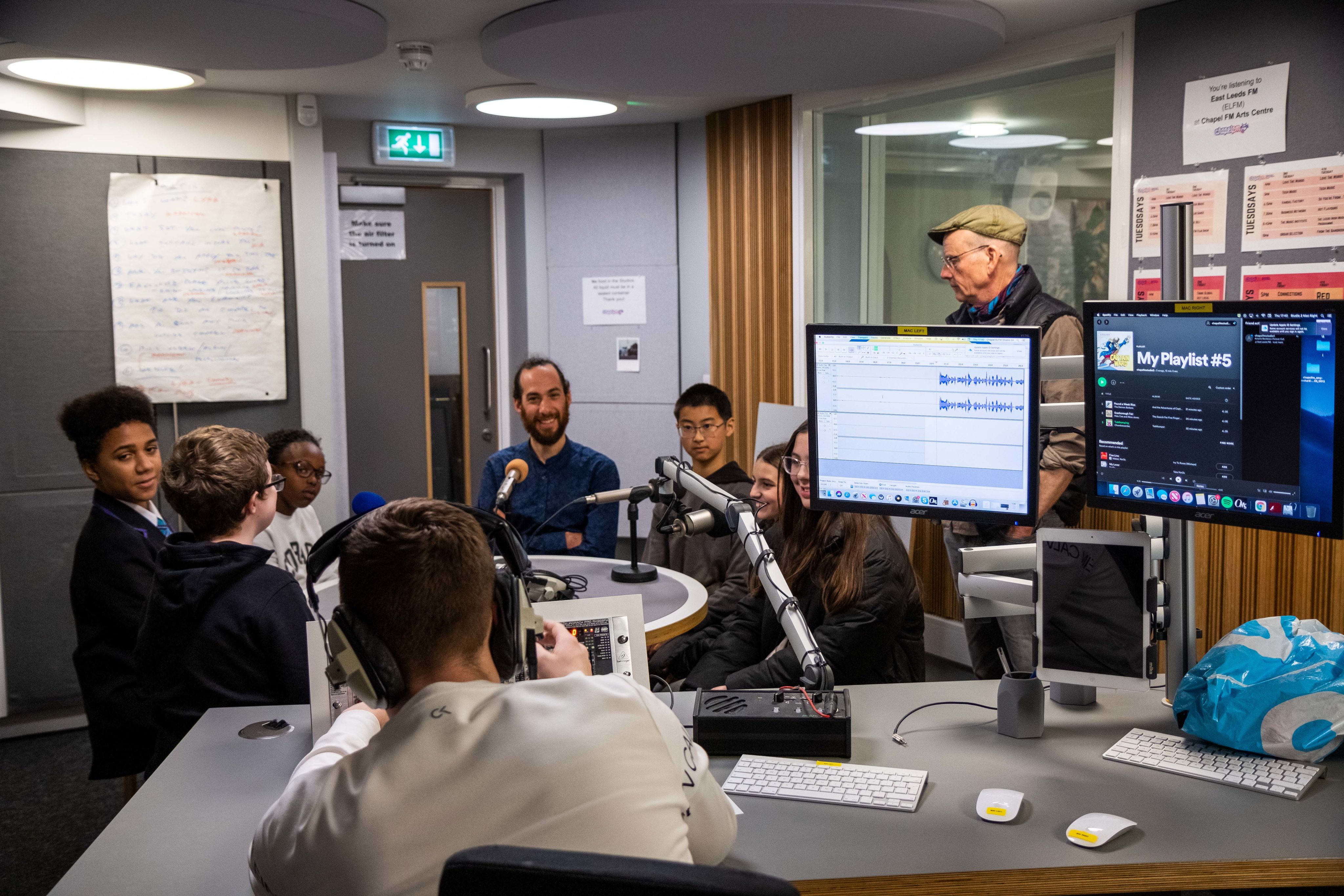
Martin sits answering questions in a radio studio
Martin sits answering questions in a radio studio
The recorded interviews, once complete, would be played in the following day's Red Kite episode, a radio series created by the young people themselves.
The first Red Kite aired after lockdown in August 2020, exploring what the area around them looked like after months of lockdown. Providing a dedicated space for stories "by, for and about young people."
In previous weeks, the group has covered topics from the pandemic and music, to the US election in 2020 to the Kill the Bill protests in the UK.
But now, with the interviews pre-recorded, guests invited and a running order for the following day drafted, the group were ready to tackle their final Red Kite of the year.
"It's all about seeing the world from above, from the edges, from outside the status quo"
LS14
Nestled just within the ring road that surrounds the city of Leeds sits Seacroft, home to over 40,000 people.
Although it hasn't always been so busy. Before the Second World War, Seacroft was a quaint village, a stones throw from the city of Leeds.
The Village Green, which still sits at the centre of the town today, saw cricket games played in the summer and was reportedly bustling with activity at the weekends.
The Cricketers Arms pub, which overlooks The Green, still stands today and has provided refreshments for nearly two centuries.
Seacroft Methodist Church has stood in the area since 1874, seeing thousands of Sunday services, marriages and funerals. The organ, which now proudly sits in the upstairs half of the old building, was added in 1910.
However, change was to come.
The rolling farmland that surrounded the village was largely purchased by the council at the beginning of the 1930's to make way for new housing.
Despite disruption in the Second World War, by the 1950's, work was underway to build Seacroft Estate as part of a nationwide attempt at constructing affordable housing en masse.
In 1965, on a drizzly and grey October day, The Queen visited the area to open the new Seacroft Shopping Centre. With rows of onlookers in awe of the Royal car, The Queen opened the new shopping area which was built right in the very heart of Seacroft.
However by the new millennium, with more and more housing being erected in the area and the old Seacroft Shopping Centre seemingly outdated, a change was needed.
Now, nearly 60 years after the Queen's visit, a Tesco superstore dominates the area and sits where the shopping centre once did.
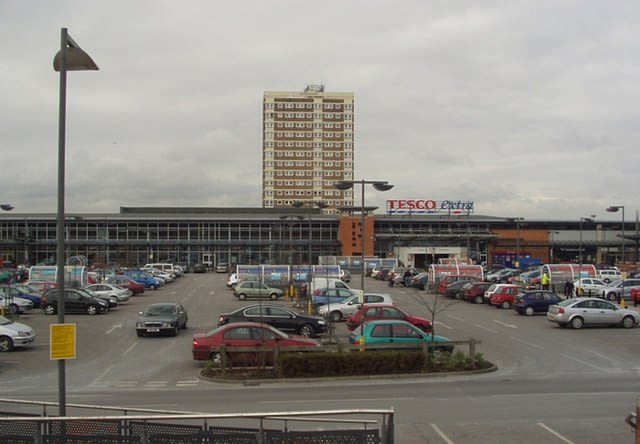
Seacroft Shopping Centre © Rich Tea - geograph.org.uk/p/140190
Seacroft Shopping Centre © Rich Tea - geograph.org.uk/p/140190
Gone are the days of bustling Saturdays at the Seacroft Shopping Centre. Now, the nearest shopping centre is Cross Gates or, simply, Leeds City Centre itself.
Once known as a small village on the outskirts of Leeds, Seacroft in recent years, has been known for being one of the largest council estates in the country.
Now, the area has been branded as one of the most deprived areas in Leeds with some of the highest crime rates in the area.
Despite that, Seacroft is home to a multitude of different generations and communities from a number of backgrounds.
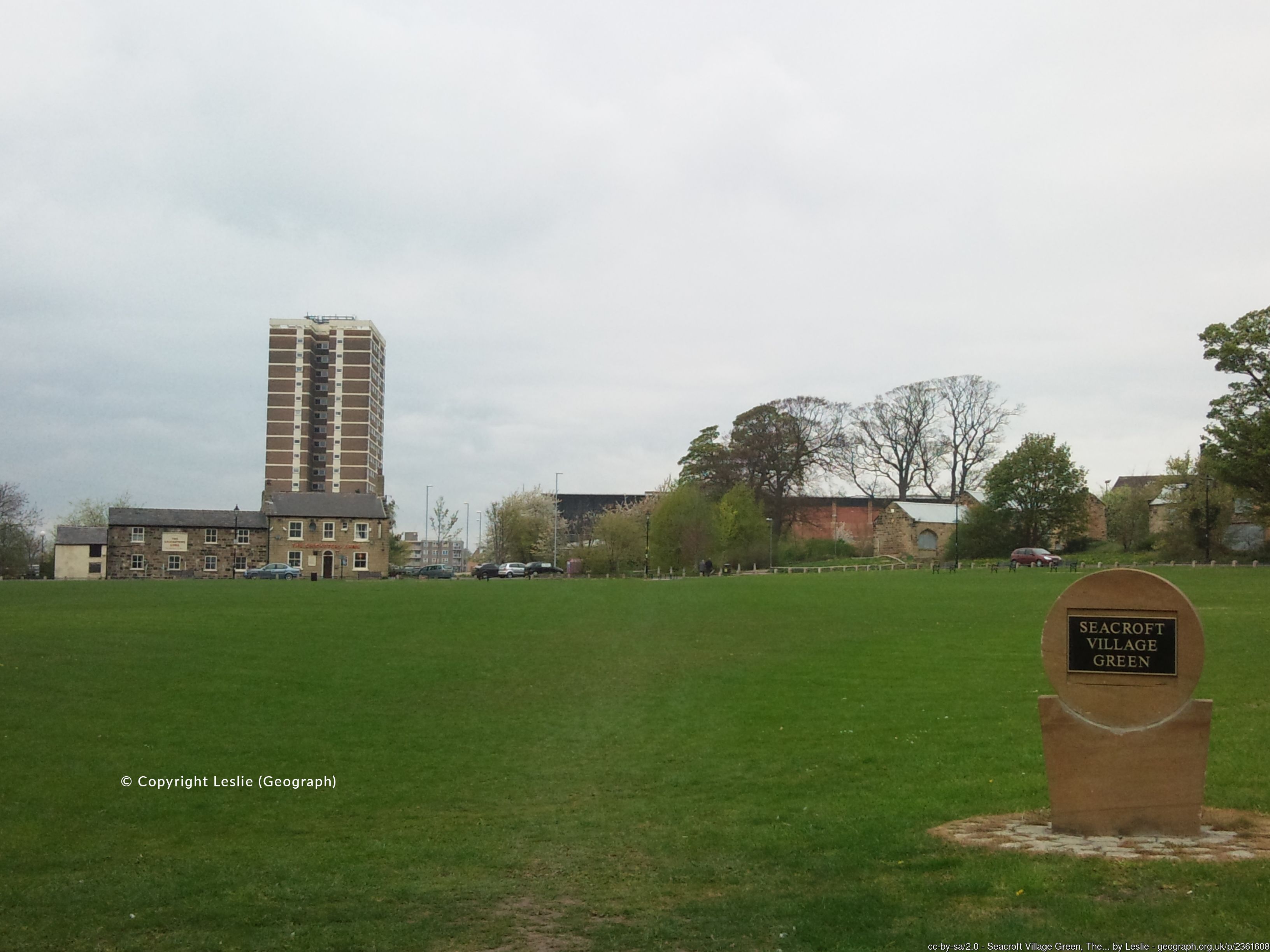
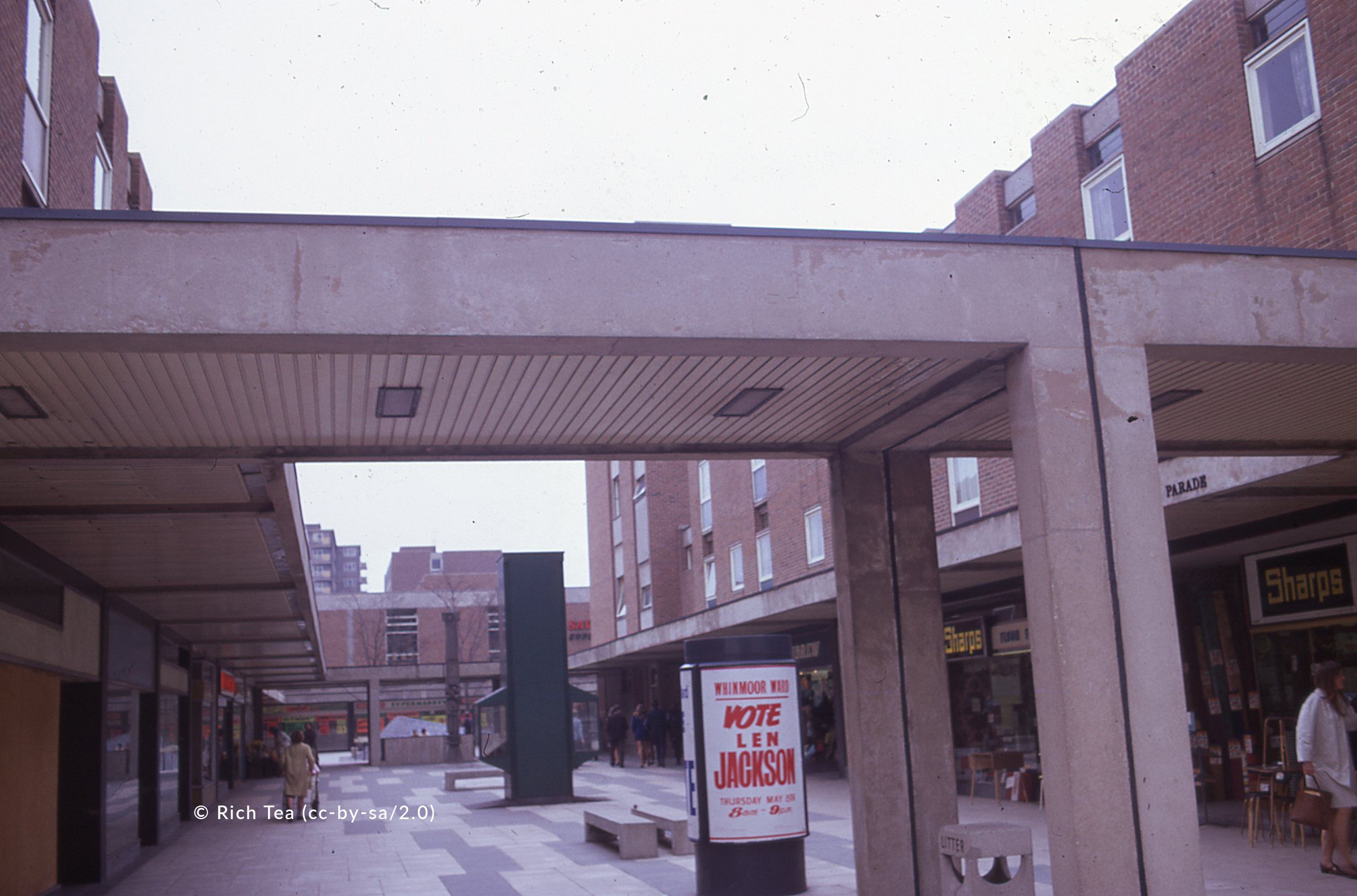
"Somewhere safe, creative and inspiring"
The monthly schedule at Chapel FM is one of great extremes. With radio at its core, the studios are typically full with different groups recording various pieces.
However, in addition to that, activities within Seacroft Methodist Church are rich in diversity and creation. Many of which have very little to do with radio broadcasting. Radio simply being the anchor that holds everything together as one.

The Next Gen group showcasing the work they did in at COP26 in Glasgow.
The Next Gen group showcasing the work they did in at COP26 in Glasgow.
A typical week would see an open mic in the main hall upstairs, following a young broadcasters session; a weekly writing group a day before a older generation singing group.
"It's about time East Leeds had an arts venue of it's own to be proud of. Chapel FM is it."
"Growing up, you want somewhere safe, creative and inspiring," James Lewis Moran stated as he sat in the café space downstairs with an open mic roaring on in the hall above.
He explained that he struggles with certain forms of learning difficulties, one being alexithymia, a term used to describe someone that has problem with feeling and conveying certain emotions.
For him, creativity is something that everyone has within them and is something that should be allowed to flourish. But in his experience, is something that's typically dampened.
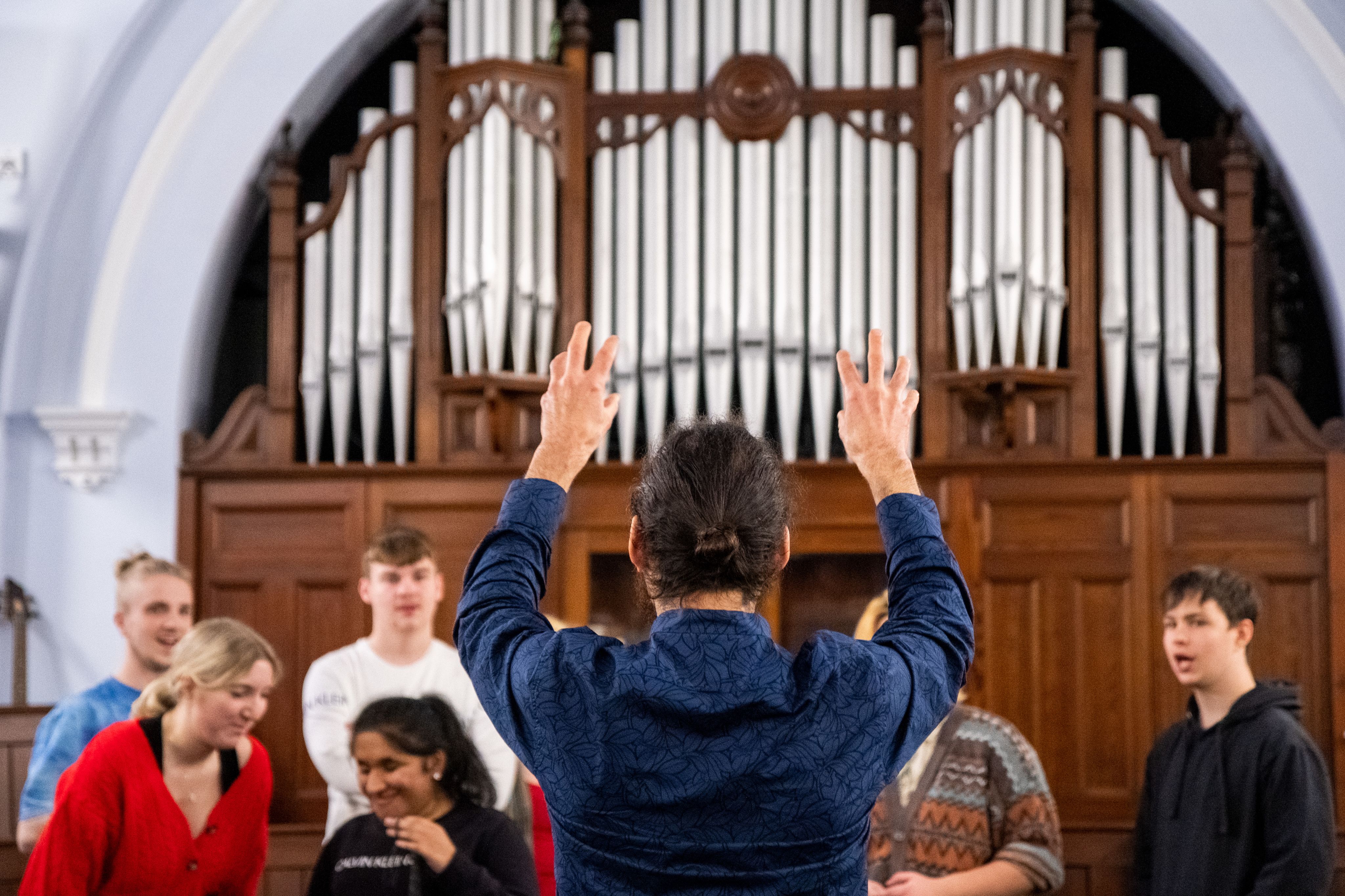
Martin conducting 'the human orchestra'
Martin conducting 'the human orchestra'
"Kids get bullied for being creative, so they hide their talent. That's why this space is so important," he said as he folded a leather book together and placed it within his backpack. After asking him what was written inside, he explained it contained material for a new poetry book. It would be one of five once finished.
He looked up, smiling at the preserved iron-pillars, providing support for the ceiling, "grand architecture like this is usually bulldozed by the council. We need to preserve communal areas like this."
Only the day before, he sat alongside a mixed group in the weekly writing course, led by Chapel FM's inhouse writer Peter Spafford.
Each week, they gather to work on their writing skills, mainly as a hobby for most, providing support for one another as they share what they'd crafted throughout the week.
Chapel FM's Story
Whilst Chapel FM's story dates back to 2014, the group actually formed in 1998, 16 years before, known as Heads Together Productions Limited.
Preceding this, the Heads Together Physical Theatre toured from 1986 with a commitment to working with people who had physical and learning difficulties.
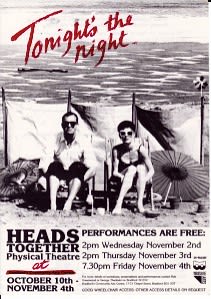
A Heads Together Physical Theatre performance poster
A Heads Together Physical Theatre performance poster
Having rebranded and refocussed in 1998 as a community arts group dedicated to providing creative projects across the region, they worked with schools and colleges throughout Yorkshire.
One such school, John Smeaton High School in Seacroft, quickly became part of a pilot project at the turn of the millennia.
In 2003, Heads Together worked with a group of Year 8 students from the school on the first ever FM broadcast from a brand new community radio station. East Leeds FM was born.
Despite being a great success, the broadcasts were taking place from the back of the newly built Tesco superstore, which sits where Seacroft Shopping Centre once did.
The group needed a new place. One that could be more permanent.
Whilst nothing could be found straight away, they continued broadcasting for the community. Jumping from location to location. Gathering momentum.

'Goes Nicely With a Cuppa!': An old bus advert for East Leeds FM.
'Goes Nicely With a Cuppa!': An old bus advert for East Leeds FM.
By 2007, they had found a home. An old, disused rent office behind a row of shops became their base of operation. However, every window in the room was smashed and the place wasn't exactly fit for purpose.
"The [space] wasn't accessible," Katy Hayley, the group's participation manager noted, adding, "we were up some very steep stairs and it was dark at night. It just didn't feel like the sort of place you could welcome people. But it was a base either way."
Albeit not a permanent solution, it was one that would work for the time being as their work continued to grow and evolve.
And work it did, for many years. However, the group branched out and was made aware of an old, decaying church at the heart of Seacroft. A building that had no heating or electricity and was beginning to decay, but a beautiful building nonetheless.
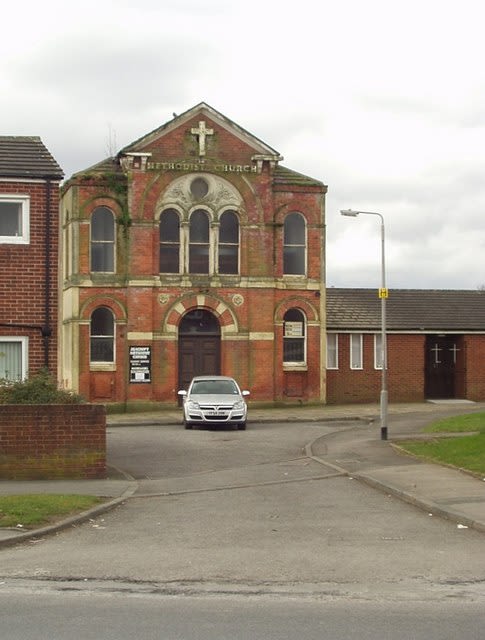
Seacroft Methodist Church in 2006 © Rich Tea (cc-by-sa/2.0)
Seacroft Methodist Church in 2006 © Rich Tea (cc-by-sa/2.0)
In 2009, the first ever Musicathon took place, broadcasting from the Old Seacroft Chapel. The year that followed saw a similar event take place once more.
"The Musicathon is a celebration of this building. It's 24-hour music, non-stop."
At this point, the group were working with architects and developers to see how they might prevent the chapel from disintegration, with the plan of Seacroft Methodist Church being their new and final home.
Meanwhile, during the years leading up to their eventual move, the group continued work within the community from the old rent office. This was, of course, until 2014, when they finally made the move into the newly re-developed church, marking the foundation of Chapel FM.
"It's so important that facilities, such as yours, are there to support local communities."
After the permanent move, Chapel FM continued their community work, growing year on year, with the Musicathon taking place each December as a celebration of each 12 months before.
Deeply rooted within their work over all of these years are a set of creative values. By understanding the role of arts centres in allowing communities access to creative opportunities, those at Chapel FM provide a platform for those on their doorstep to develop, forming meaningful and positive change in the surrounding community.
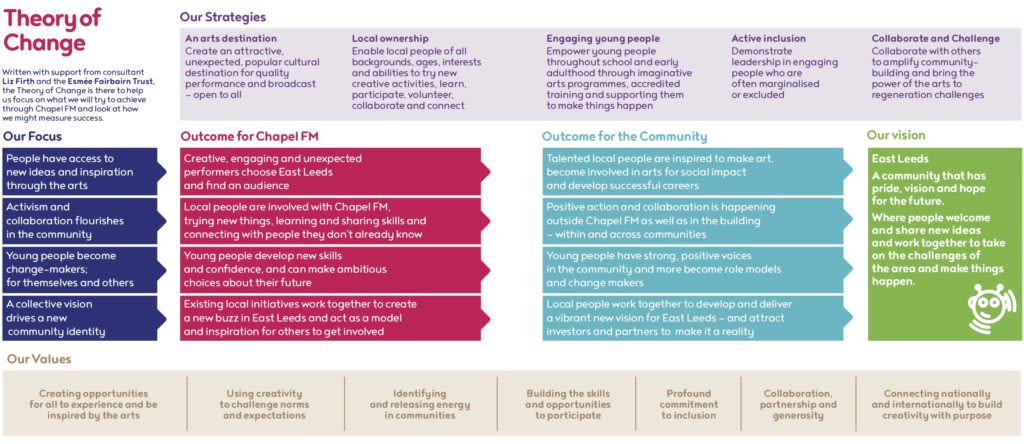
Chapel FM's 'Theory of Change'
Chapel FM's 'Theory of Change'
In their 2004 manifesto, they pledged a commitment to developing meaningful creative work with the surrounding community, where they'd "value individual identity." Something that's evident in all of their work.
Now, being part of The Donut Project, Chapel FM are just one of many arts centres providing this support to communities in the outskirts of Leeds. However, they're one of the only centres of its kind in the East of Leeds. An area that over 70,000 people call home.
According to a 2018 report, many of those who frequent Chapel FM are from it's immediate surroundings of LS14, most of which don't attend any other arts centre.
Many of those interviewed suggested that there wasn't anything else like it in the area, one saying that it's "the heart of the local community."
During lockdown, the group even gained a 12-week FM license, allowing them to broadcast to those around them.
"The issue that we realised early on was about other people connecting with what was going on," Katy stated, acknowledging that a lot of information shared at the time was scary and sometimes not rooted in fact.
"There was this sense that we could create great radio that was of-the-now and wasn't about scaremongering," she added. This birthed the idea of 'Stay Close, Keep a Distance,' a radio show dedicated to overcoming isolation.
"The idea was that those that were listening would hear voices they recognised or places that were local to them - and just to cheer people up a bit."
To connect with the area further, the group decided to fundraise to buy radios for those who weren't fortunate enough to have one at the time.
"There were a couple of times I went around Seacroft radio delivering to the recovery centre and old people's homes," Katy added with a smile on her face.
In the September of 2021, the group proudly reopened its doors after a large-scale refurbishment. The Good to Go celebrations marked another landmark for the group's development.
Not only was a fresh lick of paint and access to a large hall and communal space. Not only was it a fun three-week festival. But it reaffirmed their space in the community. It sent a beacon to those in the surrounding area to say they were there. They were open.
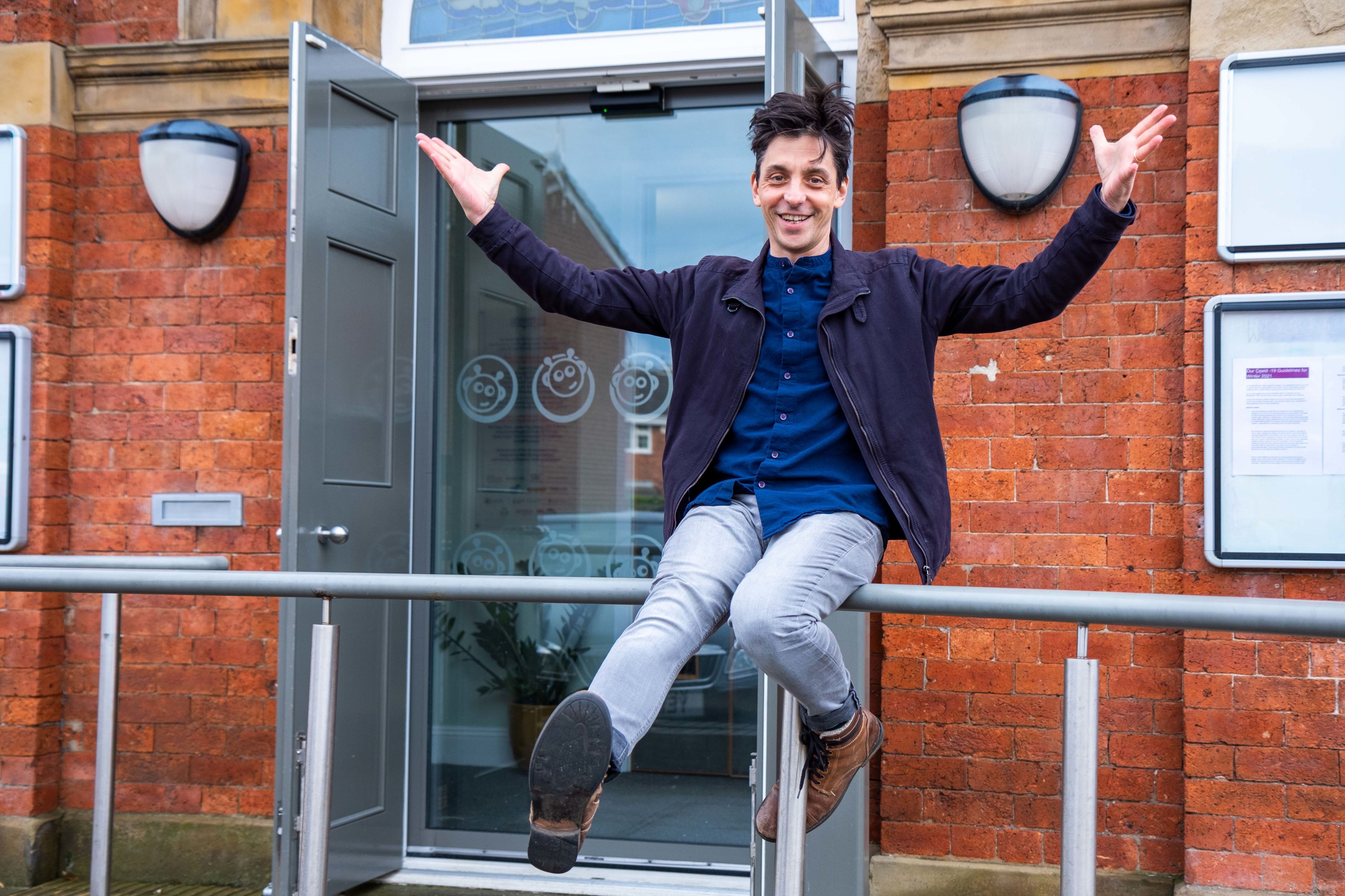
Tony Macaluso - Co Director
Tony Macaluso - Co Director
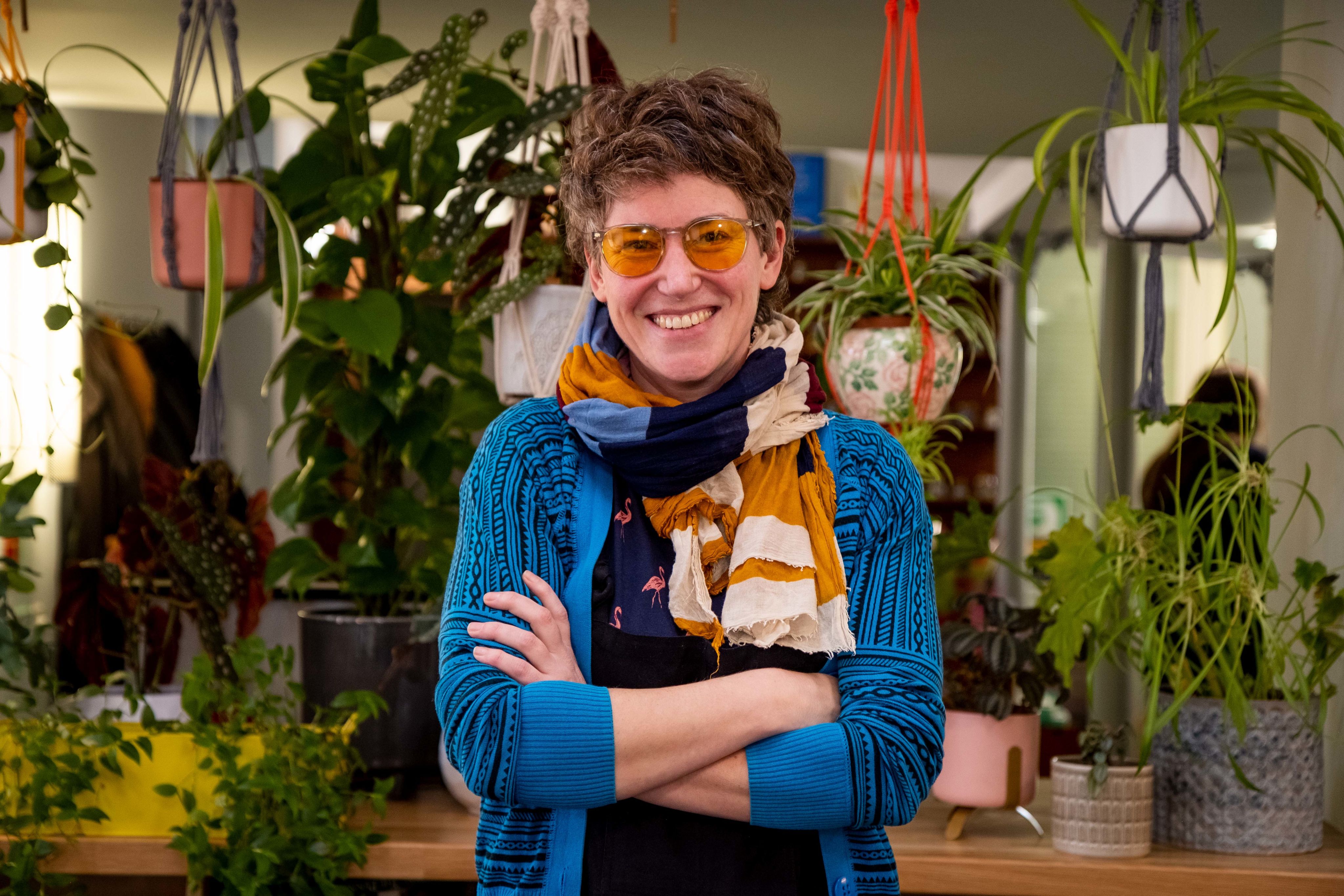
Katy Hayley - Participation Manager
Katy Hayley - Participation Manager
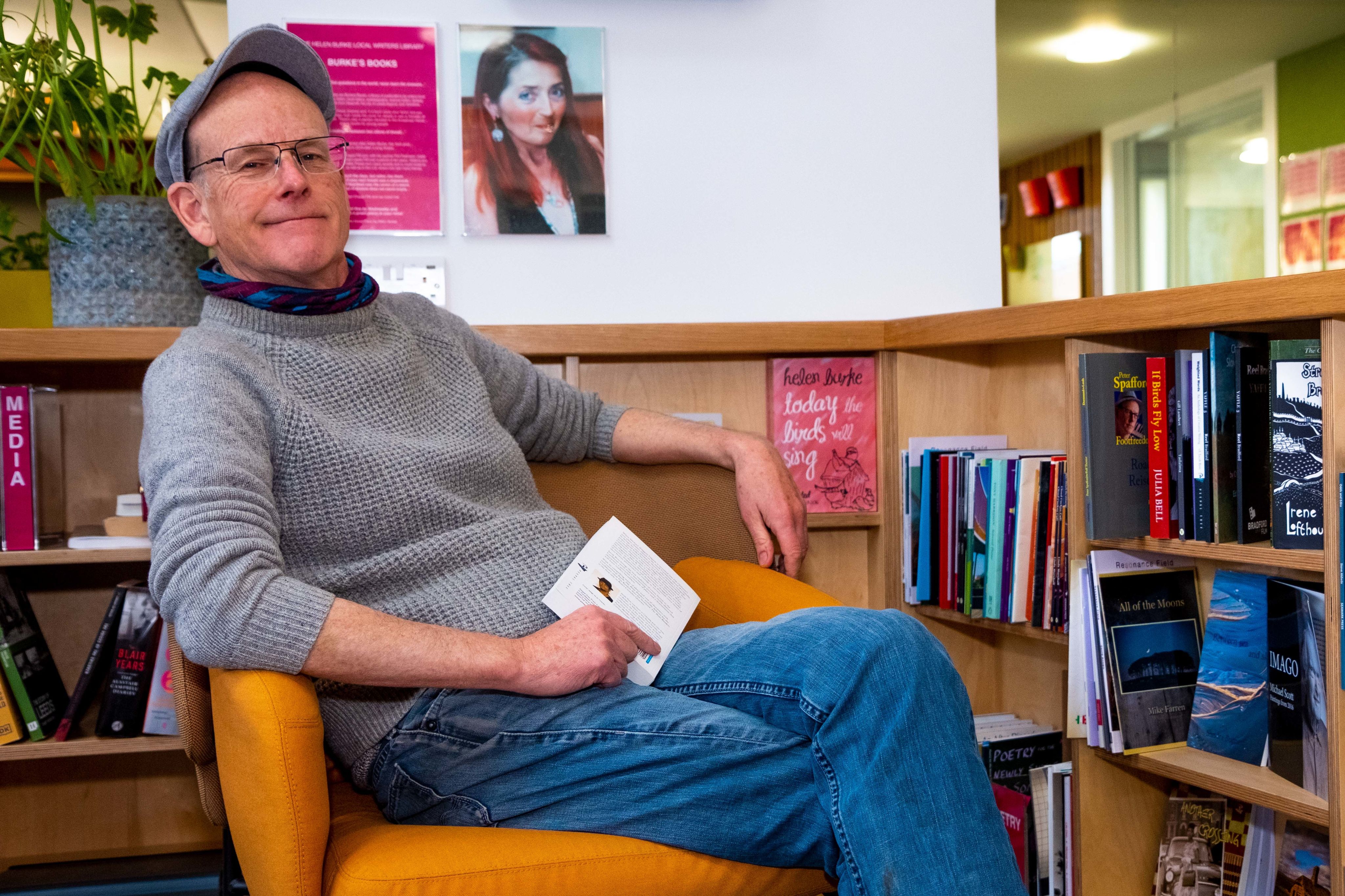
Peter Spafford - Director of Words
Peter Spafford - Director of Words
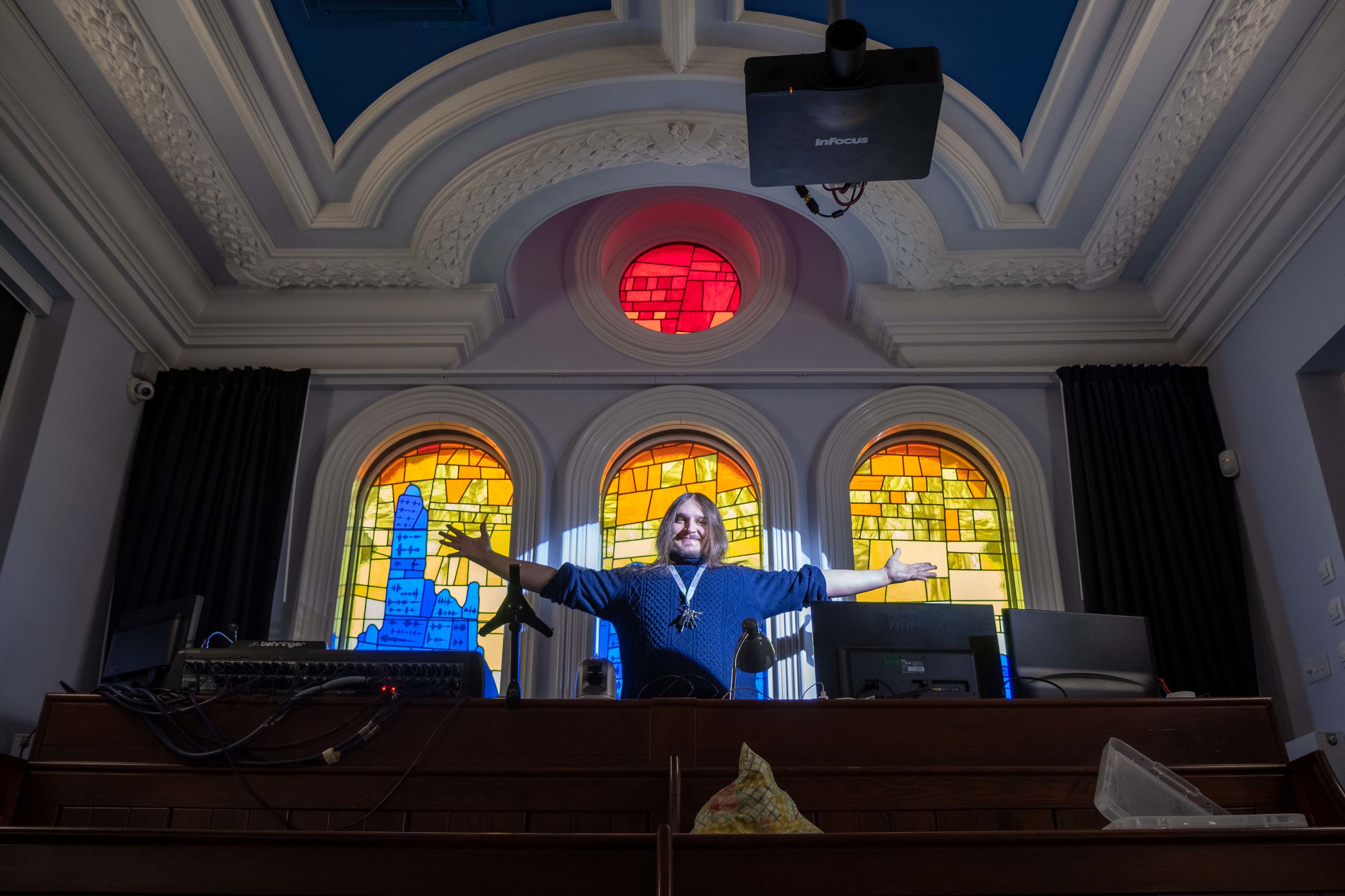
Elliott Moon - Centre, Tech and Live Events Coordinator
Elliott Moon - Centre, Tech and Live Events Coordinator
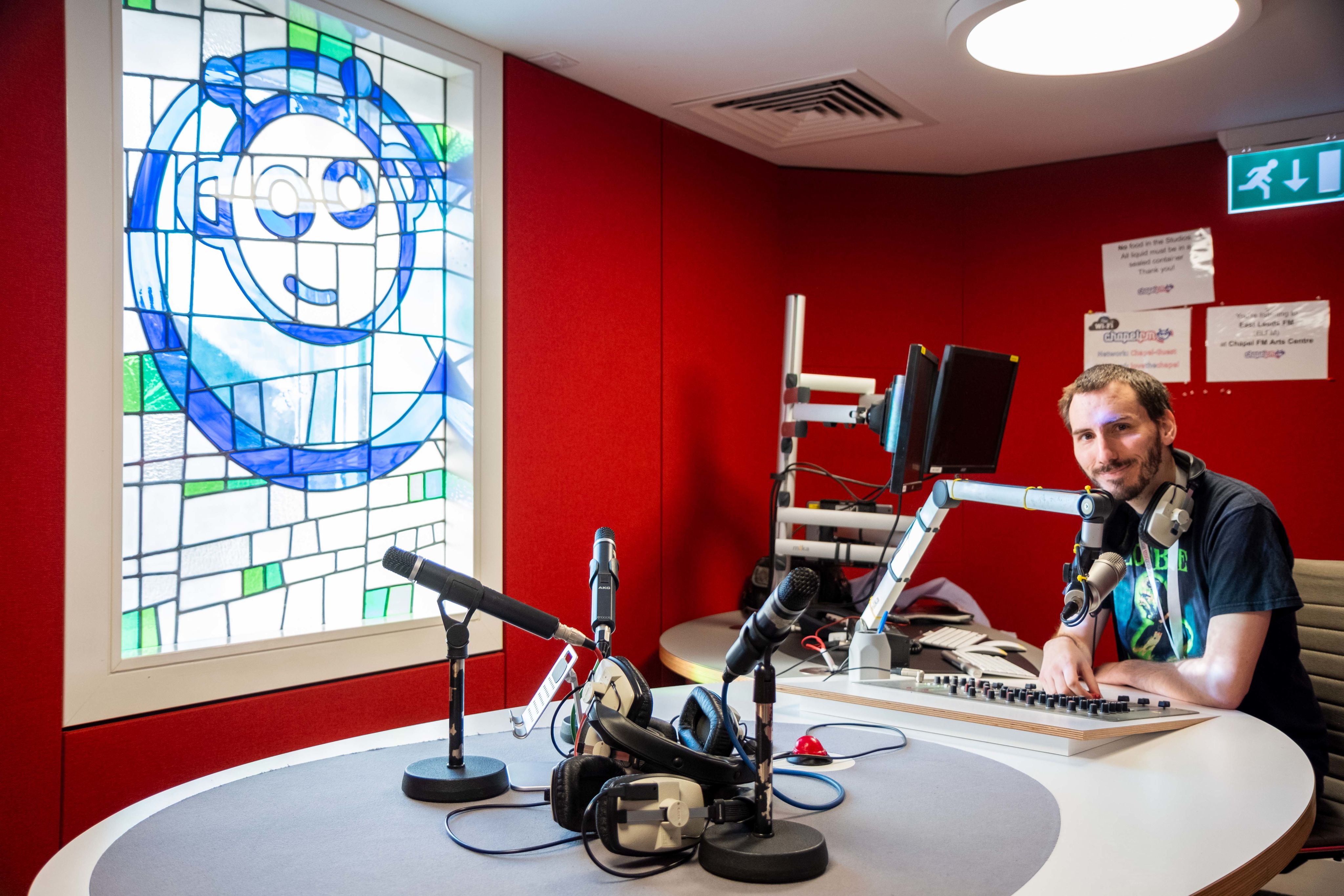
Henry Raby - Broadcasting Worker
Henry Raby - Broadcasting Worker
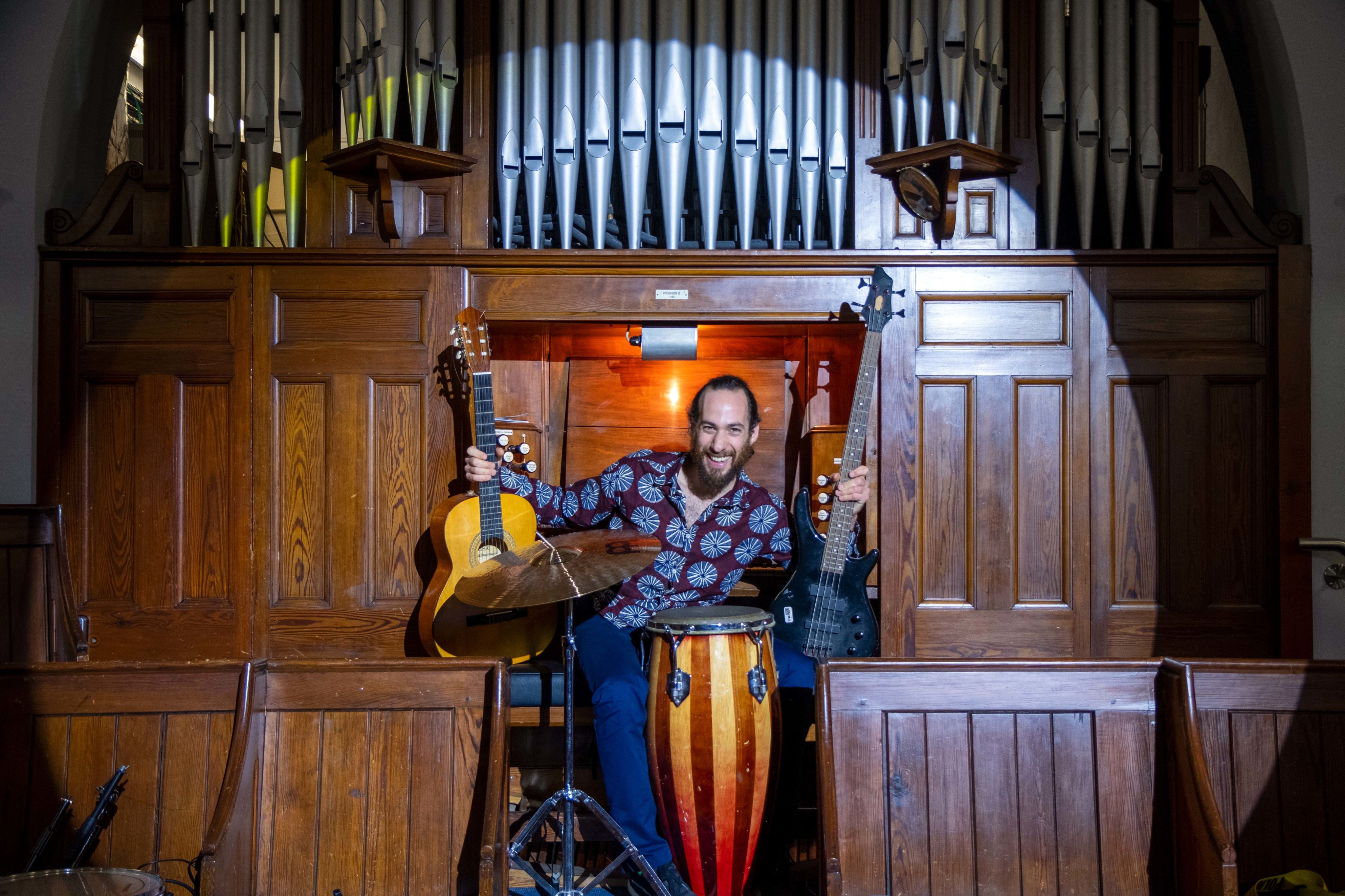
Martin Berger - Community Music Worker
Martin Berger - Community Music Worker
The Calm Before the Storm
With only a handful of days before the Musicathon was set to take place, Elliott and his team received unwelcome news: the UK government were looking to impose new Covid-19 restrictions in the weeks running up to Christmas.
With cases rising again, and a new variant to combat, doubt was shed over whether the event would take place.
The previous year, those at Chapel FM had run an entirely online event, with musicians playing from their own home, some from other countries.
"I said last year that there would be no way I'd commit to another completely online Musicathon again," Elliot admitted in the light of the news, laughing. "It was great to do that once, being sat in the Chapel on my own at 3 in the morning, but I wouldn't want to do it again."
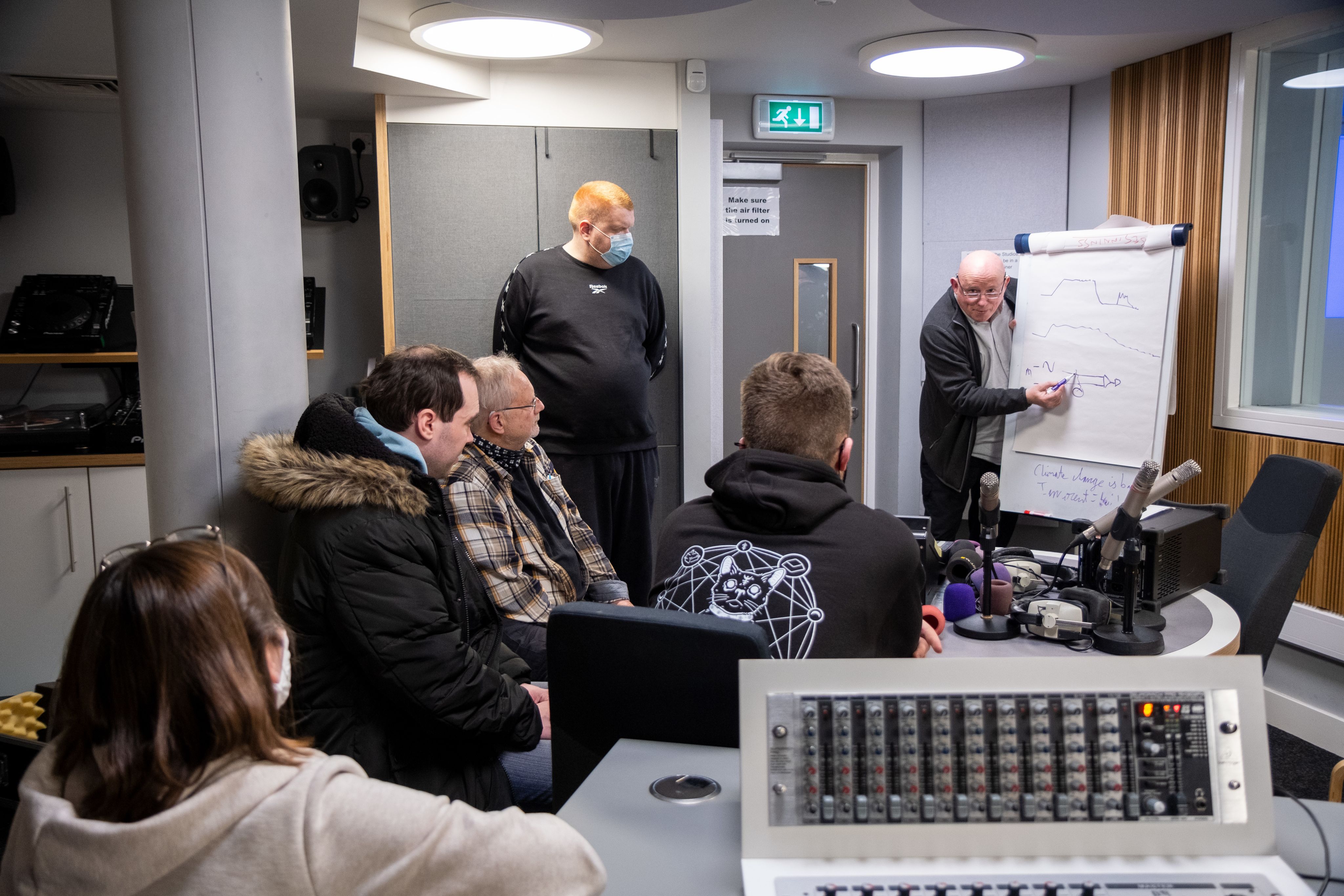
The tech group at a final tech meeting
The tech group at a final tech meeting
Even if Elliott was open to the idea of a similar setup, switching to this format with such sort notice would be near impossible. The Musicathon, especially this year, had taken months to plan.
"As we're sitting here just now, we're waiting on word from Boris Johnson tonight about if we're all going to have to work from home," Elliott admitted as he sat looking at the final running order for the weekend, with a slight glint of worry in his eyes.
"Tech-wise I'm really confident. We've got a load of really great volunteers. It's just Covid I'm worried about now."
Thrown into limbo with just hours to go, Elliott and his army of volunteers were simply sitting and hoping. Waiting for the Prime Minister's word.
"Work from home if you can," was the advice administered by the Prime Minister just days before the weekend of the Musicathon. The final three words arguably allowing the event to go ahead.
As the country moved into Plan B, masks were once again made compulsory in all theatres and music venues.
"Luckily, I think we're okay," Elliot confessed as he sat back from his computer with less than 24 to go until the first note of the 2021 Musicathon was to be played.
"We'll enforce masks and distance people as much as possible, which is something we were going to try doing anyway, but apart from that, I think we're good to go."
With that, the group of tech volunteers descended upon the chapel to iron out any final problems before the big day.
In true Chapel FM spirit, the army of volunteers consisted of all ages and backgrounds. A middle-aged woman would be standing next to a teenage guy learning about lighting, or the sound desk. Someone with absolutely no experience would be listening to the same advice as someone who's worked in live events for decades.
Tony Dawson, one of the more senior members of the tech group who has worked in live theatre for over 20 years at surrounding venues talked about how the event had grown over the years as he stood making final adjustments to the lighting desk.
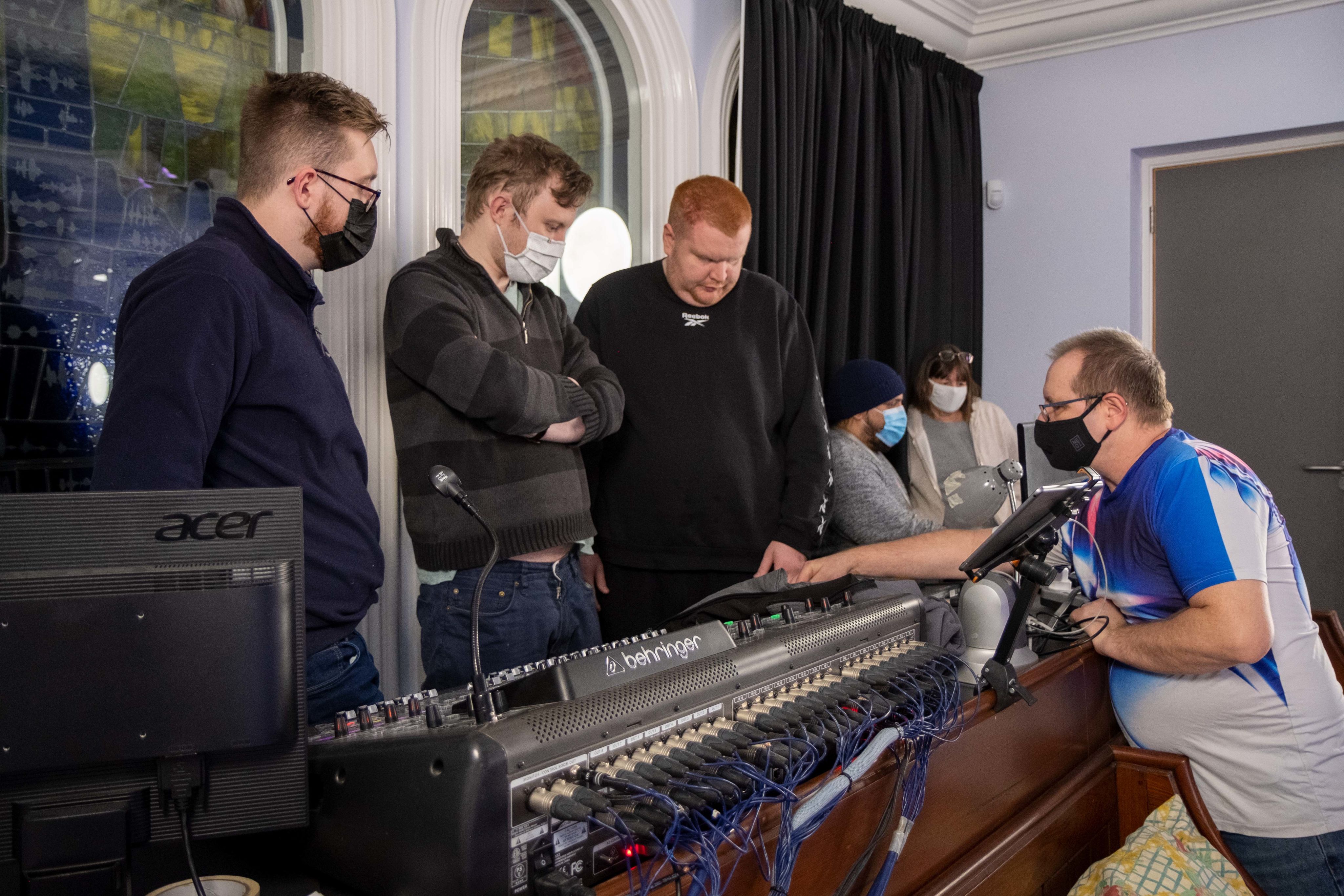
Tony Dawson (right) demonstrates how to use the lighting setup
Tony Dawson (right) demonstrates how to use the lighting setup
"It's become a lot more streamlined over the years," he said, checking the camera feeds. "Compared to how it was 11 years ago, in a building that desperately needed renovating, it's definitely come a long way."
He paused.
"I have to say, I think I preferred it back then. The craziness of it was brilliant... You'd have people just asleep everywhere," he laughed. "One thing is though, I won't be doing the full 24 hours. I've done it before a couple of times, and learnt my lesson..."
With cameras aligned and lights set up, with miles of cables run and Covid precautions put in place, the group were ready to tackle the 13th annual Musicathon.
War of the Chapel
With the Musicathon set to go ahead, the next generation group gathered a few days in the run up to complete plans for their own idea.
Just the week before, the infamous HG Wells radio broadcast boomed through the hall upstairs, in the light of the stain glass windows.
Henry and Martin had thought it could make for interesting listening if they were to do something similar. To interrupt the Musicathon towards the end and shock the audience with a storyline filled with terror.
Under the towering organ in studio 3, the group were set on coming up with a setting for their radio drama.
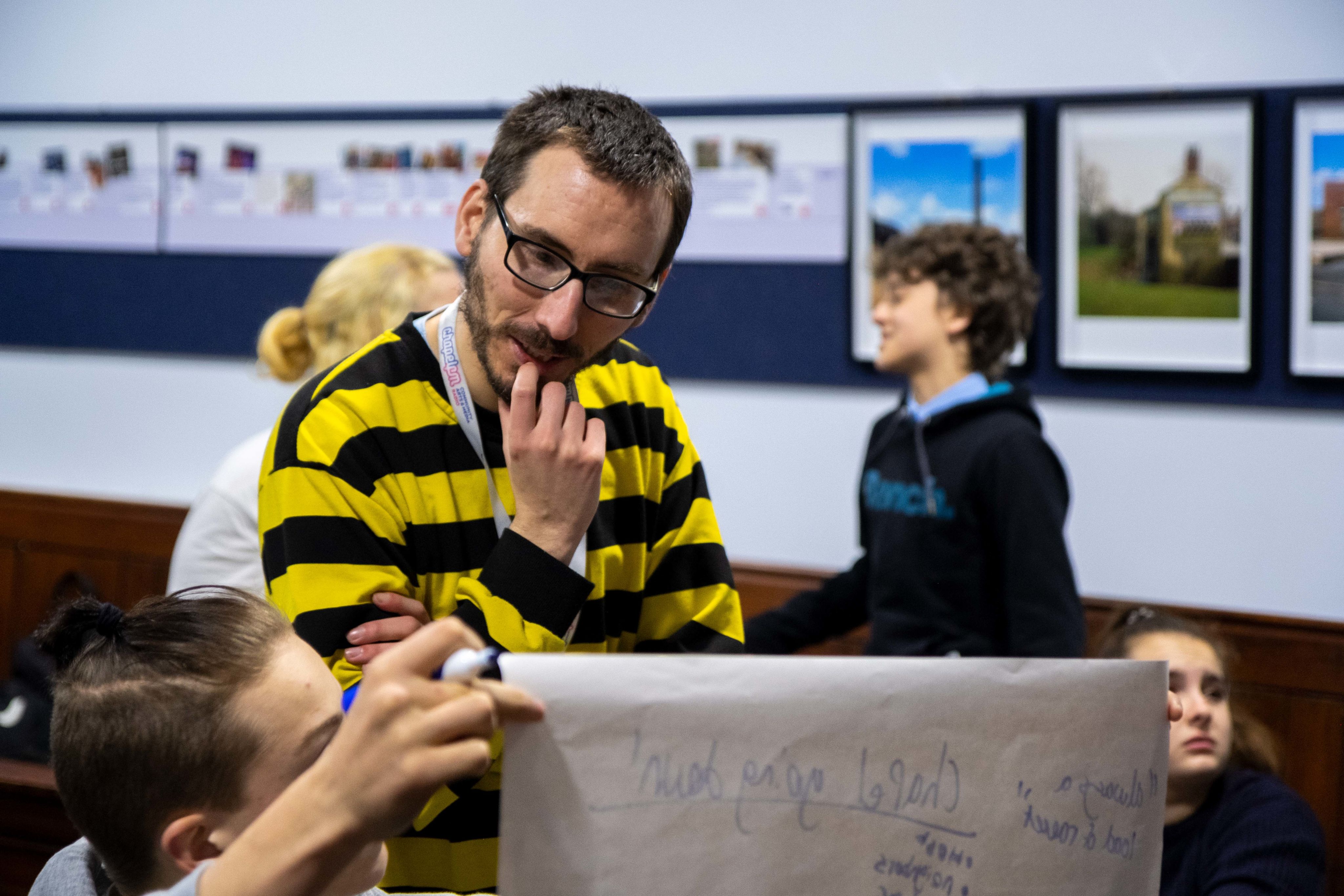
Broadcasting worker Henry inspects ideas for the radio drama
Broadcasting worker Henry inspects ideas for the radio drama
"What about if we pretend someone got possessed?" One suggested, excitedly.
"No, it has to be realistic. What about if a volcano had erupted, sending the world into chaos?" Another responded.
"No, people would know that was fake..."
Jack the Ripper was an idea branded too serious, whilst the thought of convincing the audience of a new Covid lockdown seemed too soon.
After a short period of ideation, the group landed on the idea of the chapel being demolished. It was a topic close to everyone's hearts and something that, in the current climate, could be rather convincing.
With an plan in mind, the older group began drafting ideas for mock interviews. Scripting scenes and rehearsing. The younger generation earlier that day had already recorded protest chants with Martin about a similar topic.
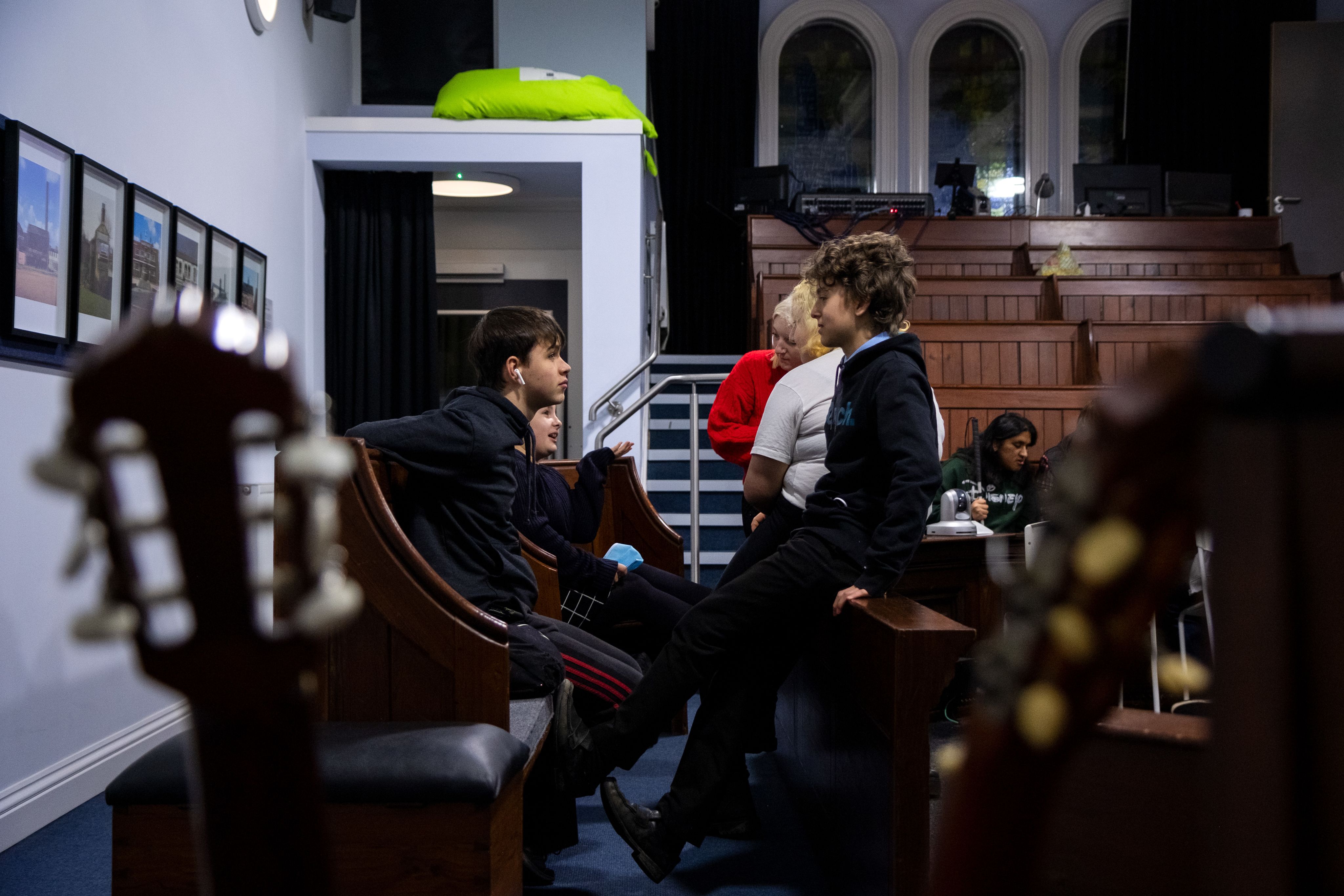
The 'Young Broadcasters' rehearsing for mock interviews to be recorded later
The 'Young Broadcasters' rehearsing for mock interviews to be recorded later
"The radio drama will be recorded and played back during the 24-hour music event happening this weekend," Martin explained to the group, smiling mischievously.
"There will be a band playing and half way through, boom! Someone comes running in shouting 'hold on, hold on!' and interrupts the whole thing."
A great deal of excitement spread like a wave through the room in anticipation of how this disruption could go.
"Let's interview the person bulldozing the chapel!" A suggestion came flying in.
"And what about some older people in the café?" Another added.
A general murmur of laugher spread when it was suggested that someone should be for the chapel being knocked down.
In just two sessions, the group had drafted an idea, grown it with the help from Henry and Martin, and rehearsed and recorded interviews ready to be pieced together for 2021's Musicathon.
An idea that would, the group hoped, gate-crash the party.
The
MUSICATHON
2021
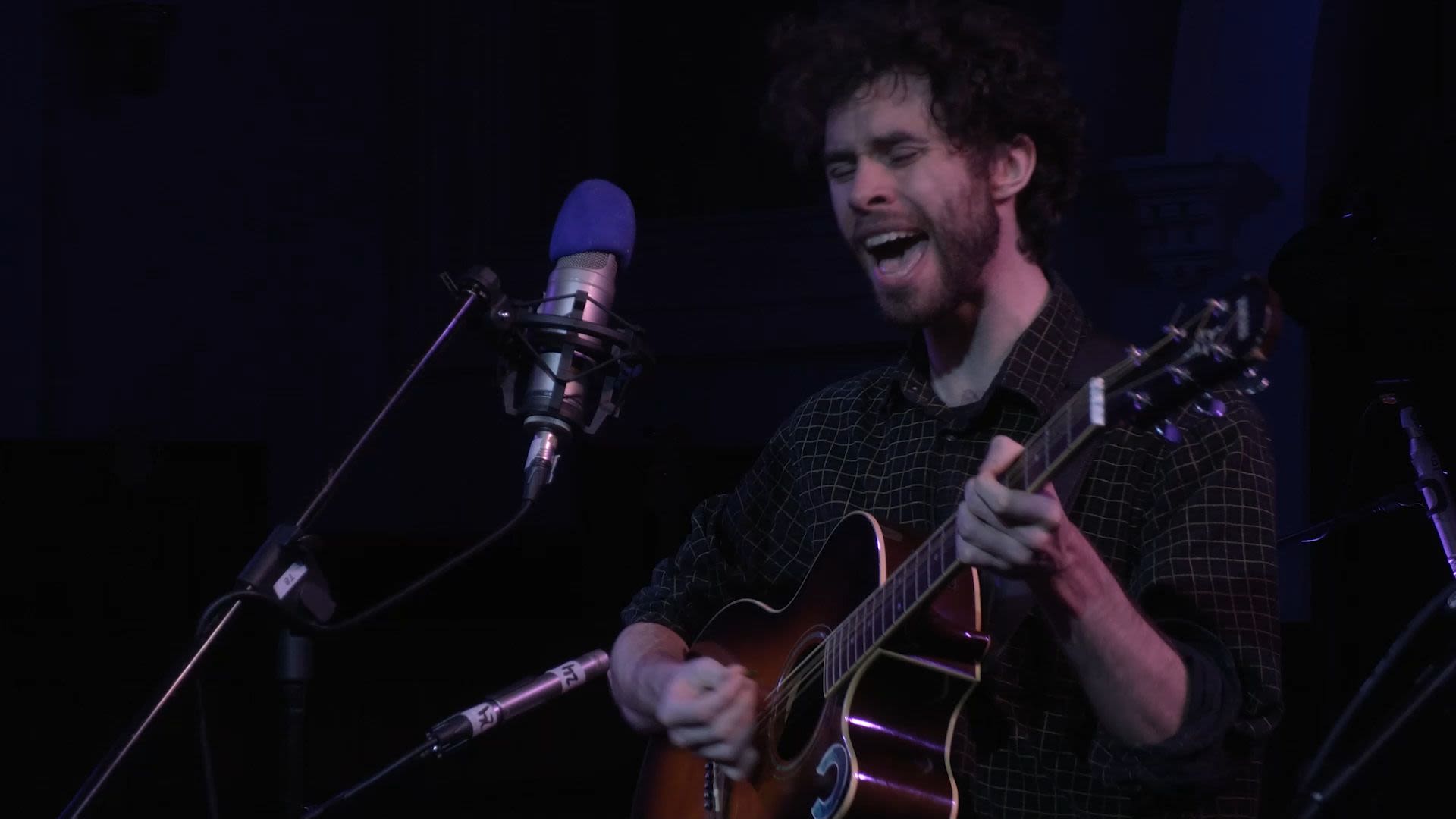
"We must be ahead if I'm doing the washing!" Elliot exclaimed, as he stood at the reception folding tea towels with a beaming smile on his face.
Typically, with only an hour to go to such an event, he would be fixing last-minute tech problems. But this year, despite all the worries, things were running smoothly.
Drawn meticulously on a large whiteboard in the reception area was the running order. Each act dedicated half an hour of the event, alternating from the hall upstairs and the radio booths downstairs.
Despite all worries due to Covid, and because of months of planning, at 3 o'clock on the dot, 2021's first Musicathon act took to the stage.
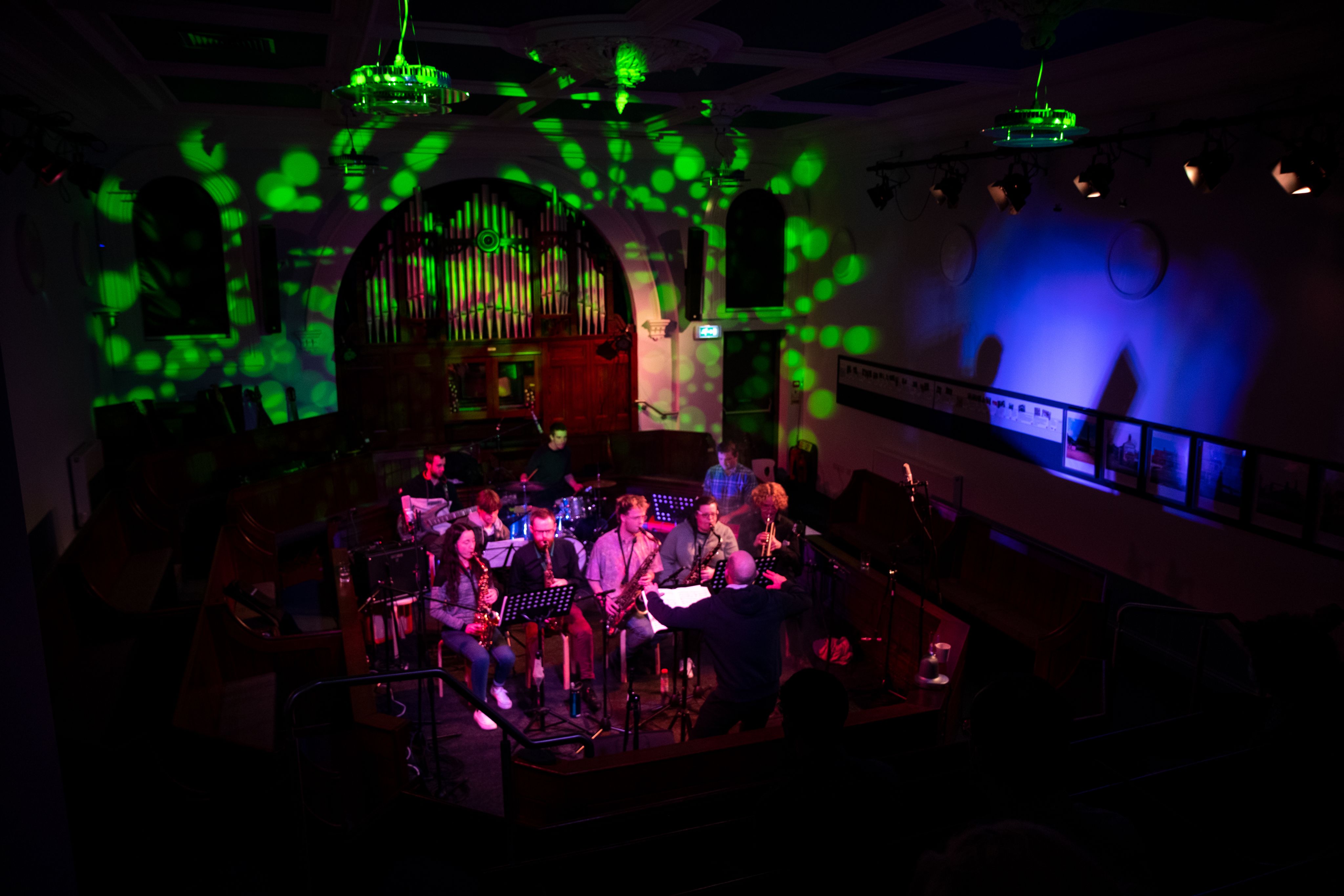
Chapel FM's Jazz Collective starts the Musicathon
Chapel FM's Jazz Collective starts the Musicathon
"They're our house band and it wouldn't be right if we didn't start with them," Elliott said, introducing the Jazz Collective to the audience.
And with that, the Musicathon was underway. The first half an hour saw people enjoying smooth jazz, followed by a solo-saxophone set from Martin.
One moment, the chapel was alive with the sound of Christmas carols, the next alternative rock was played by a week-old band Death to Christmas.
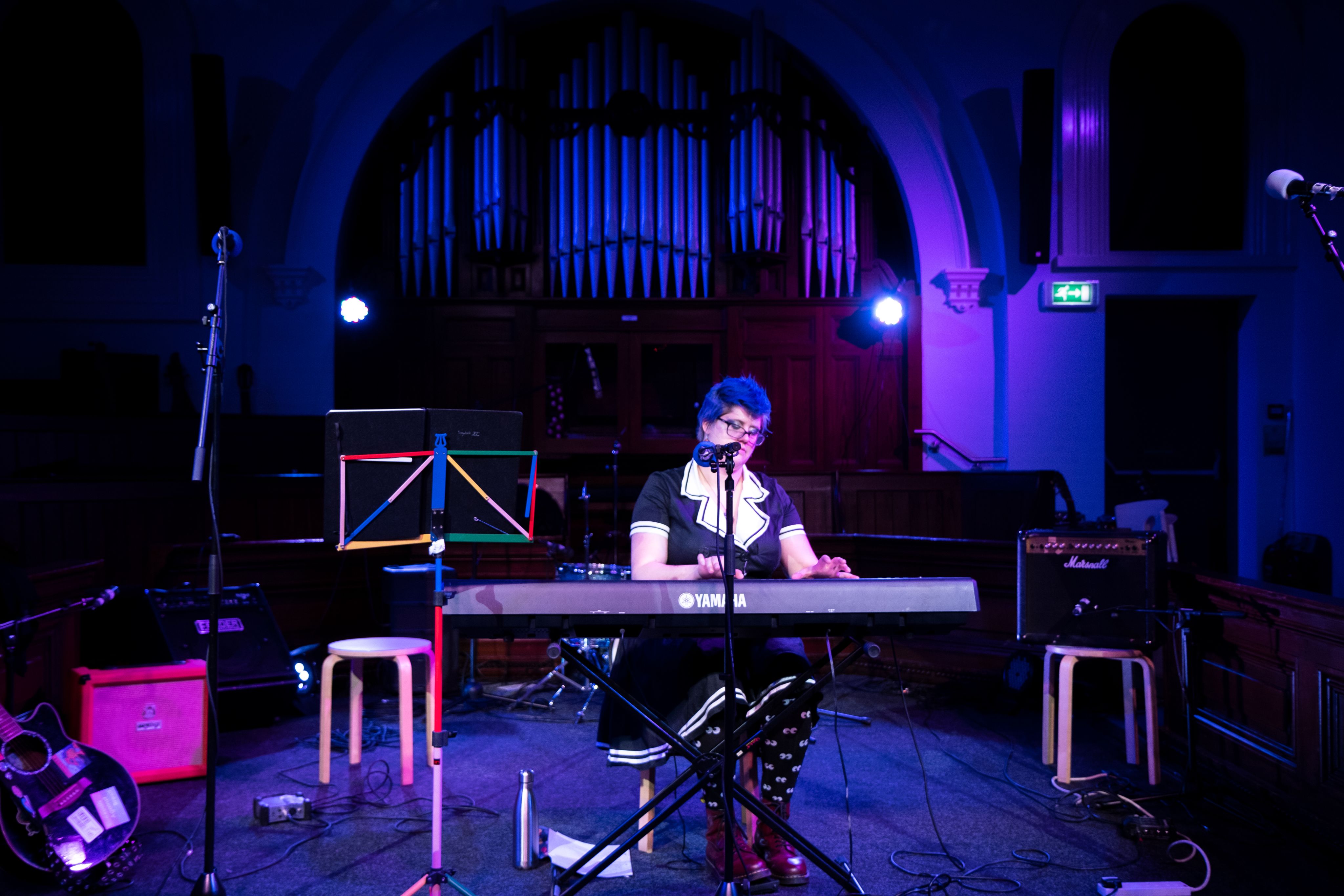
Alice Nicholls performing at the Musicathon
Alice Nicholls performing at the Musicathon
Once again, the diversity on show was nothing short of astounding.
Alice Nicholls, one of the first performers to take to the stage on the Saturday evening, noted how she loved the idea of the Musicathon. "It's a brilliant idea, and I love listening to other musicians. You never know what you're going to get.
"I love the fact that it supports the local music community so much and that such a small radio station has such a large outreach. I love it so much."
Her partner, a self-confessed eccentric who performed in the slot before expressed his love for the centre's location. Having lived in Leeds since 2001, he says that most of the venues like Chapel FM are situated in the student areas or the city centre and therefore "is a really good local resource" for those living in Seacroft.
As the acts continued into the night, determination never wavered. Even from those committed to working through the whole 24 hours. For Elliott, being awake for nearly 35 hours wasn't out of the question.
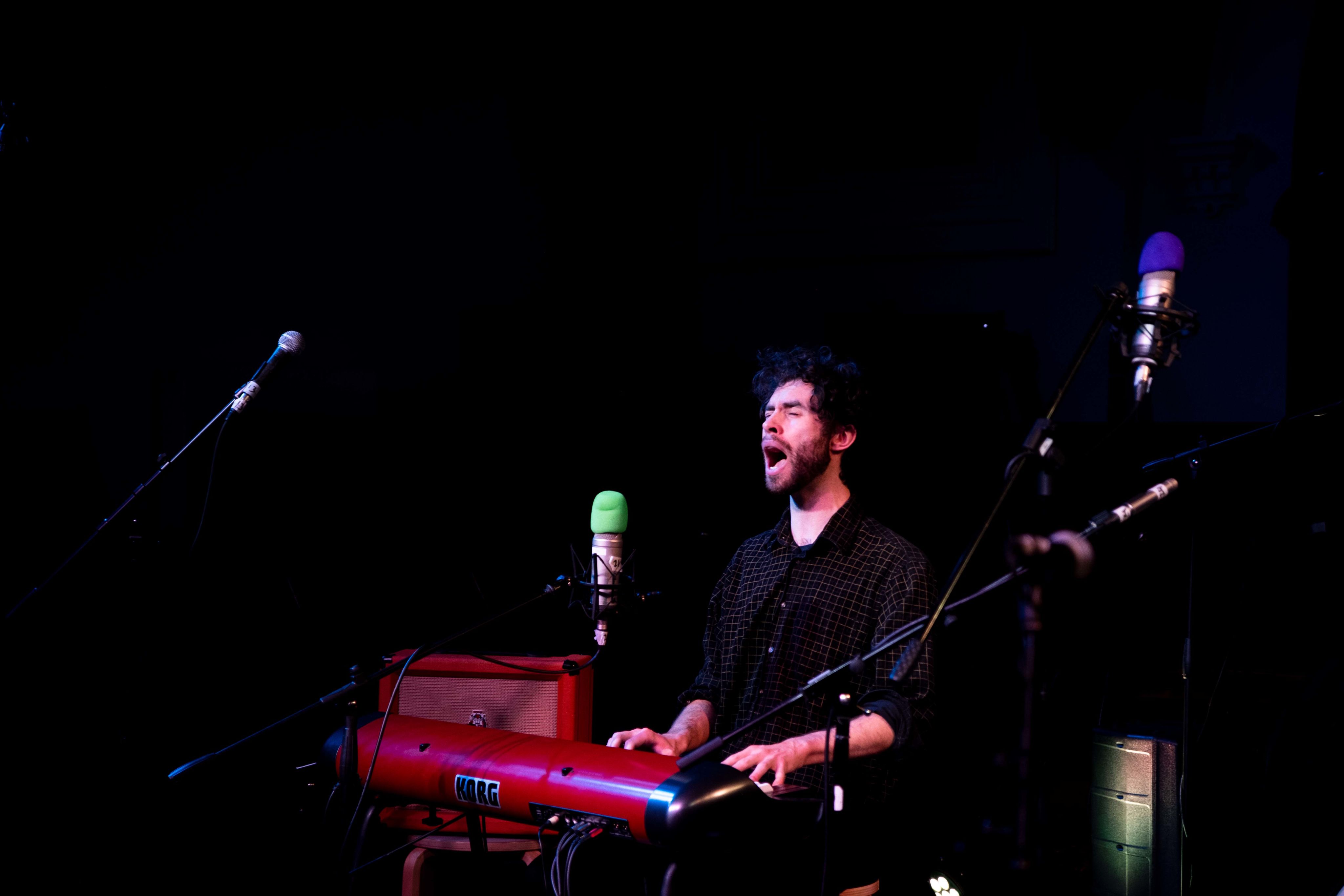
Alex Rushfirth during his set in 2021's Musicathon
Alex Rushfirth during his set in 2021's Musicathon
The night closed in but the performers didn't slow. The tech group, once one act was finished, would quickly turn the stage around, setting up microphones and working with musicians in quick sound-checks.
By 5am on Sunday morning, those who'd volunteered throughout the night were slowing down as the newcomers brought with them a new bout of energy. With some days just coming to an end, others were simply beginning.
"I love playing at 7am. It's the time where people dream."
With alternative-jazz being played in the studio downstairs, and lights on low, everything seemed slightly surreal.
The smell of cooking bacon infused in a juxtaposing manner with the aromatic scent of mulled wine.
Doing the rounds of breakfast for those who'd been at the chapel overnight was Katy. With nothing but a bright smile on her face and the enthusiasm of a saint, she walked the building handing sandwiches to the techies who were walking into insomnia to make the event possible.
As Hobson's set came to a close, so did 2021's Musicathon. An event months in the planning was over, and was testament to a team of over 20 staff and volunteers.
Each of the 42 acts that filled the 24 hours played without hiccup in one of the smoothest Musicathon's yet.
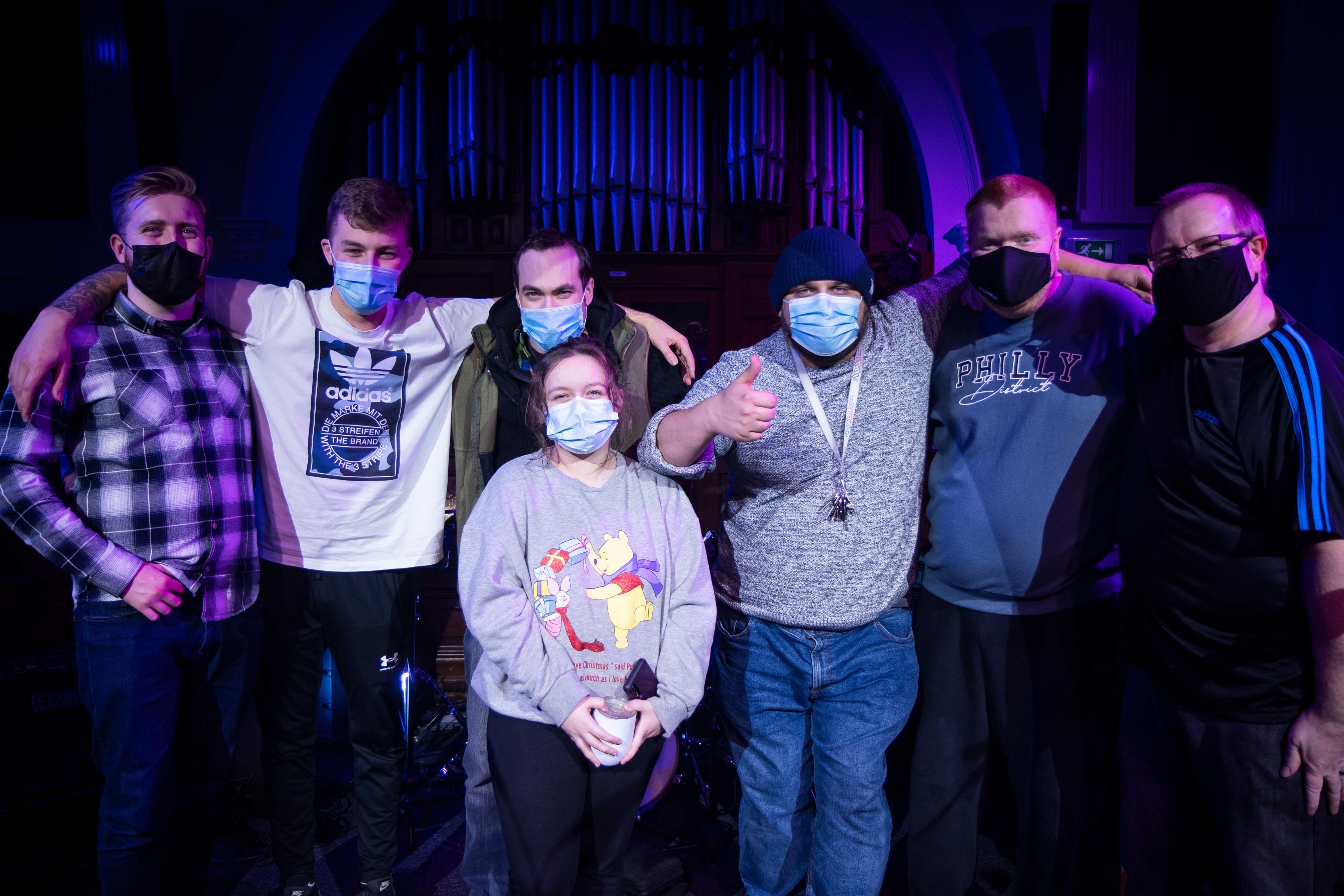
Elliott and some of the Musicathon tech group
Elliott and some of the Musicathon tech group
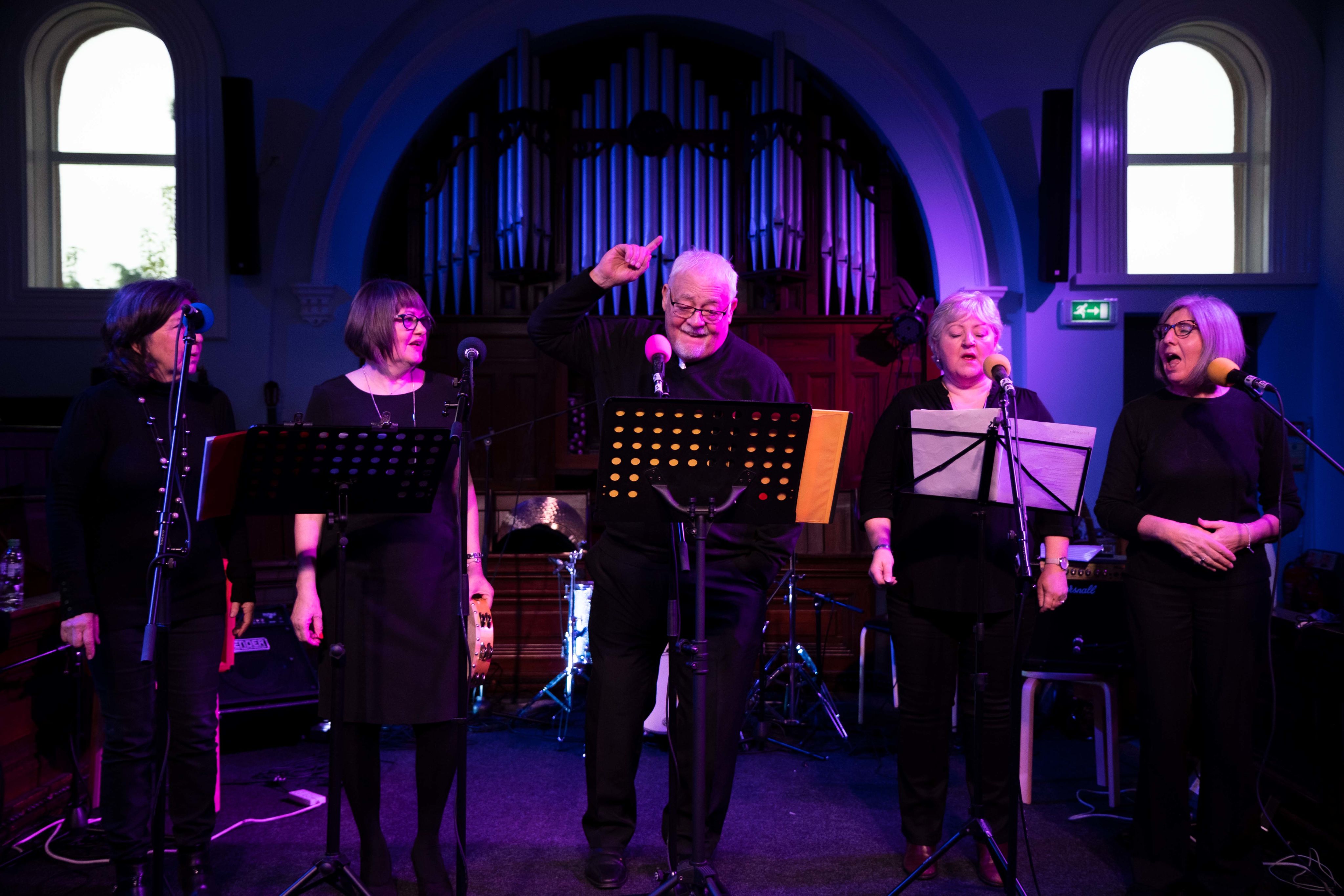
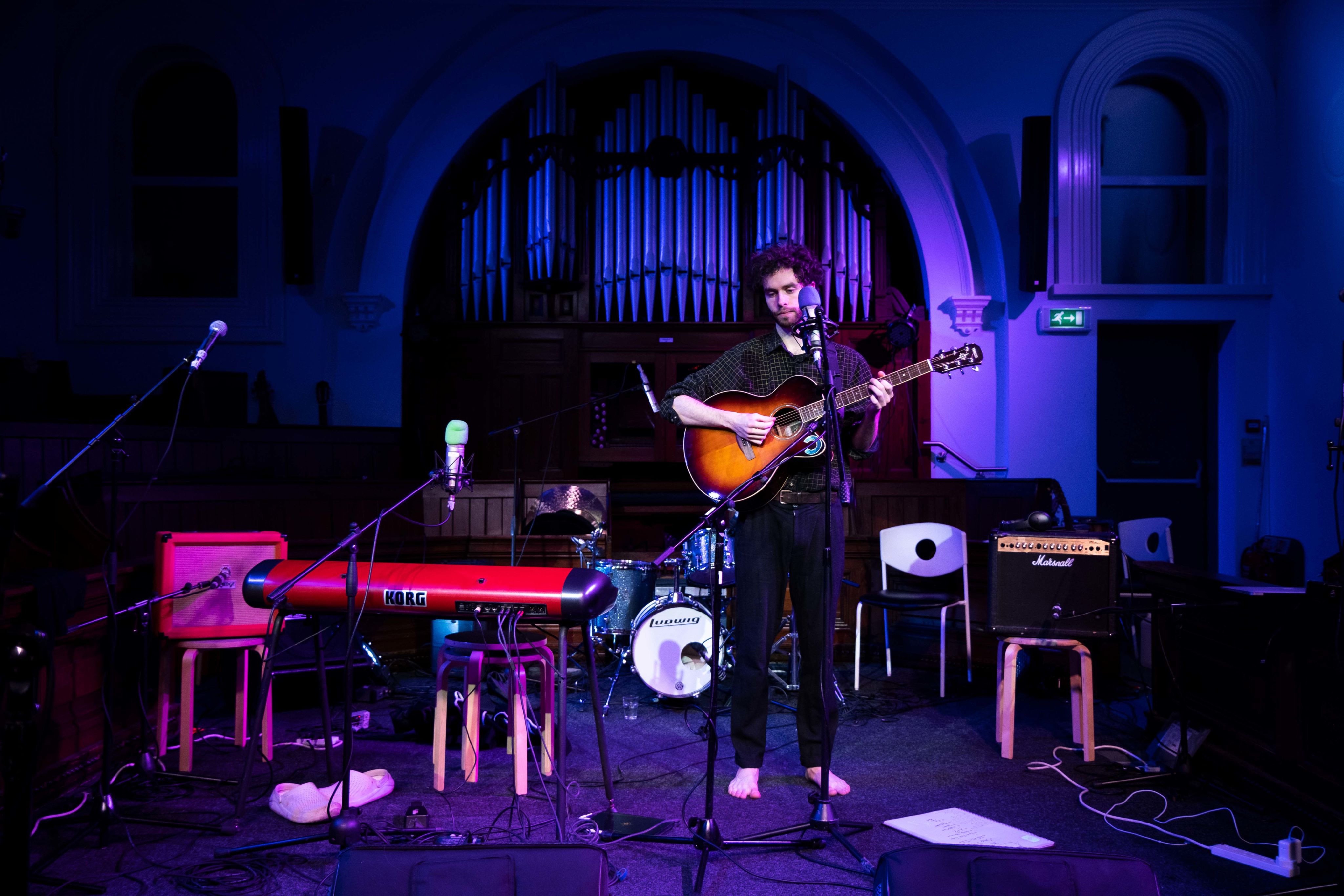
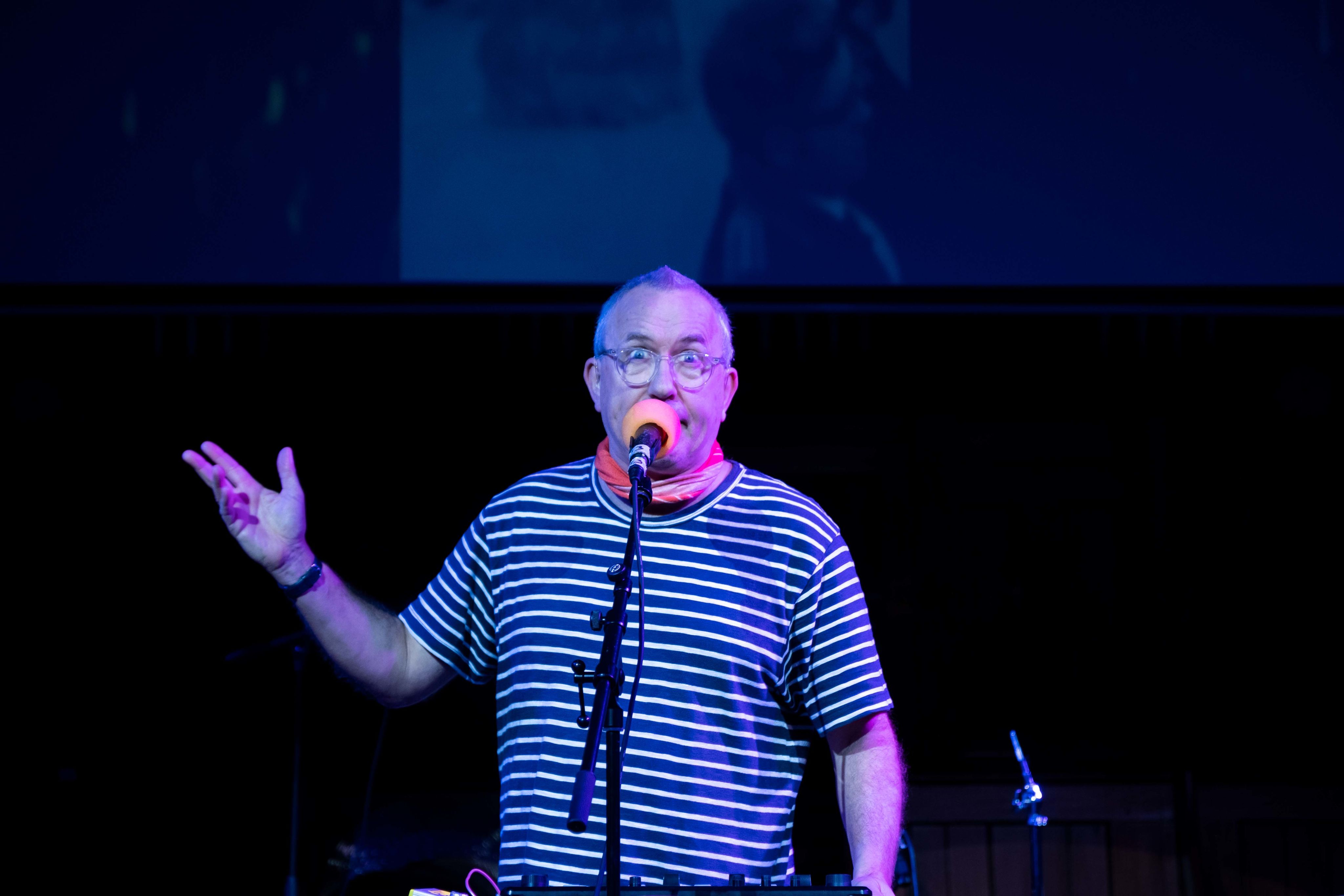
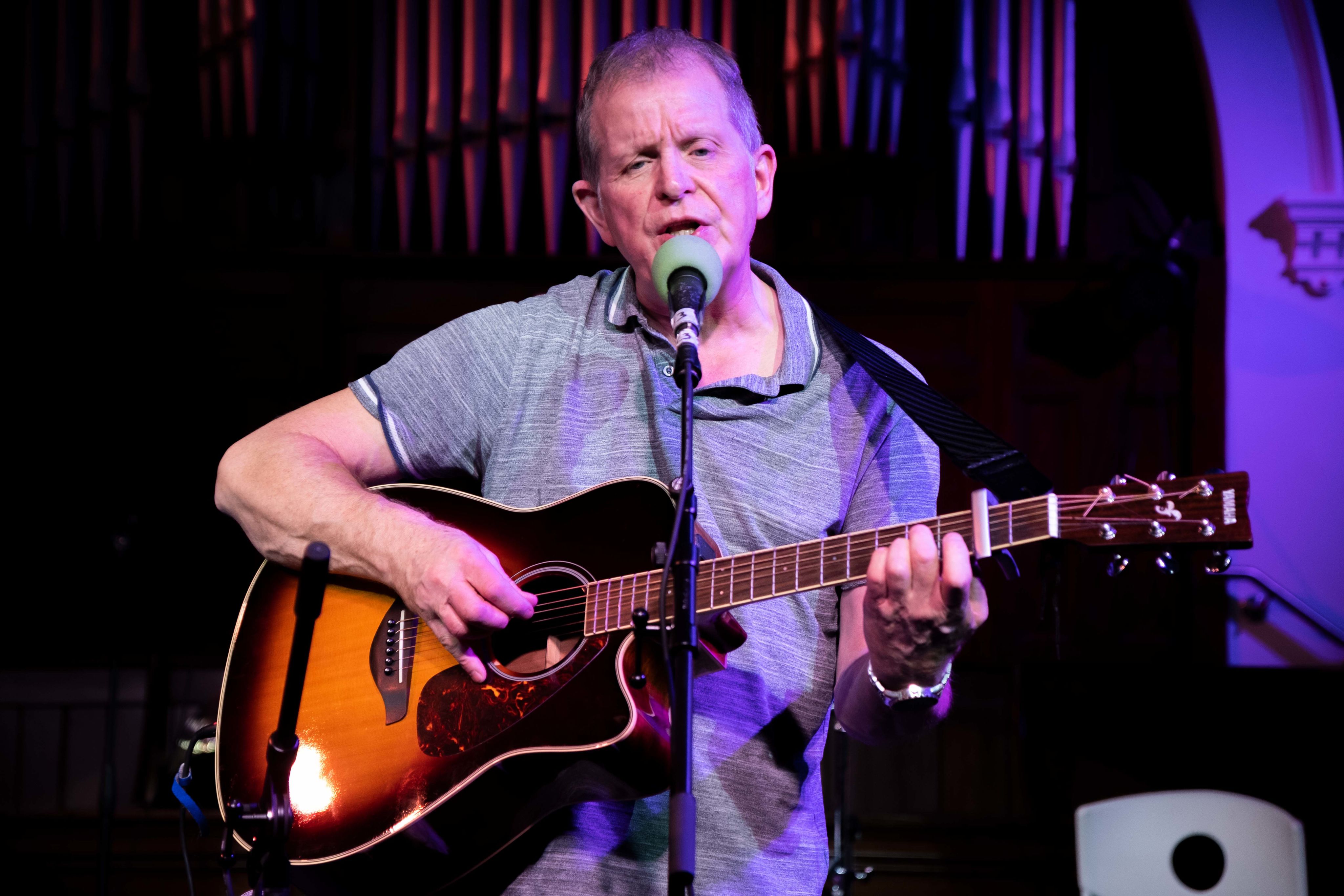
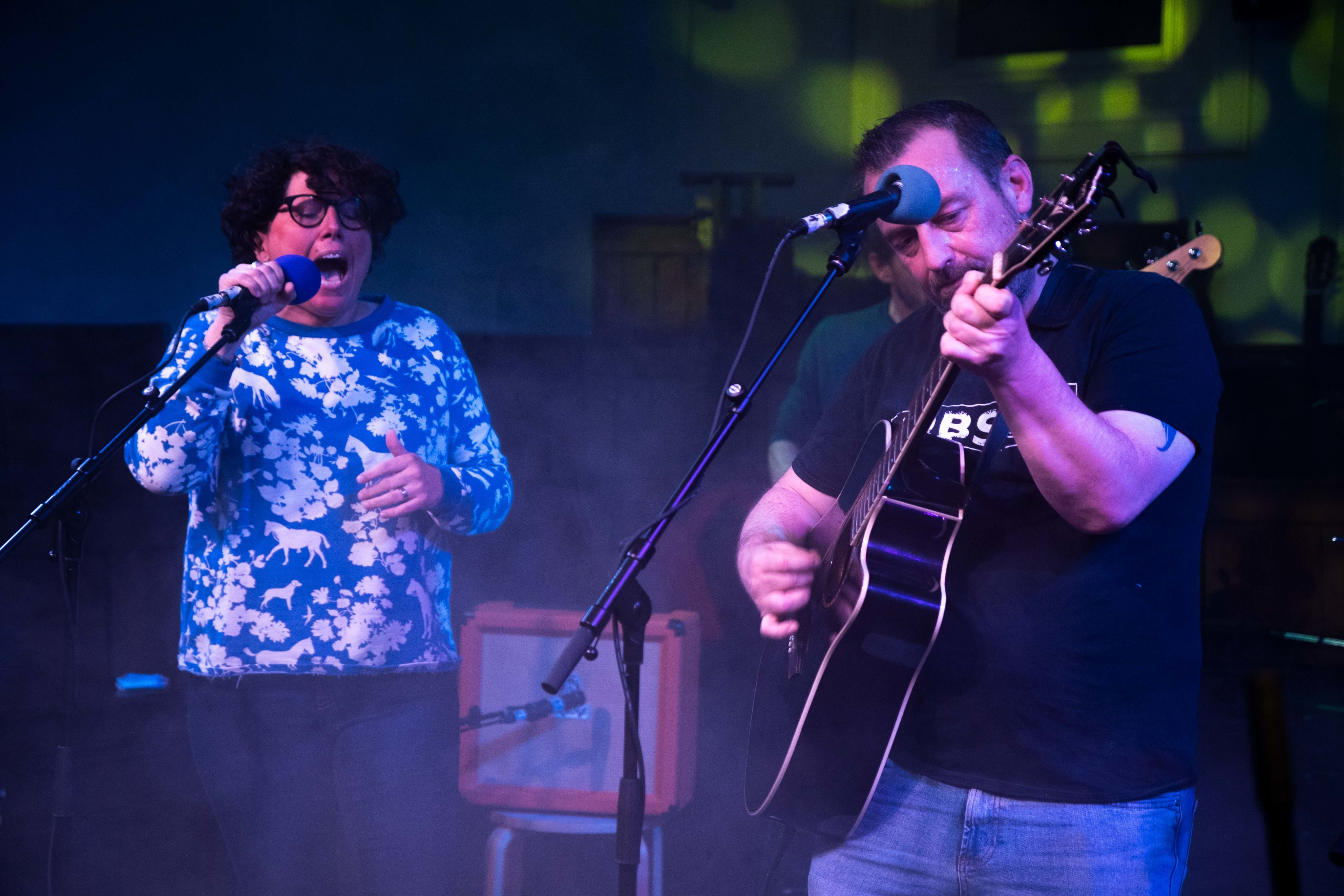
The Future
With 2021 bringing a renovated building, new staff and countless exciting events, the last year has been eventful for those at Chapel FM. From their work with young people to writing groups and open mic events, it's evident as to how important their role is in the surrounding area.
At a time where funding for the arts is plummeting, centres such as Chapel FM prove invaluable to developing creativity in all communities.

